General Insurance Blogs, Articles & Updates by - Magma HDI
Have us call you
- RENEW YOUR POLICY
- BUY NEW POLICY

Are you downsizing to a smaller space? Here are five tips to know
Moving to a new house can be an exciting change. And downsizing to a smaller place is beneficial for many reasons, including saving money and getting rid of unused space. However, it can be a challenge to decide which things to take with you and which to give away. If you get emotionally attached to your possessions, this kind of a move may be difficult for you. It's good to have a few tips up your sleeve for an efficient and clutter-free move.
Here are a few things to keep in mind while downsizing your house.
1. Give away or throw away:
One of the effective ways to make room in your new smaller house is by giving or throwing away the items that are no longer in use. For example, if you still have your primary school books or old clothes, you could donate them to the needy. For things that you cannot give away, you can recycle or simply throw them away.
2. Avoid renting storage units:
Storage units can be a great place for storing items when you do not have enough space in your house. They allow you to keep things you no longer use or need. However, before renting one, ask yourself whether you really need it and if you are willing to pay its rent for the next ten years. Remember one rule: if you have not used the item in the last year, you do not require it anymore.
3. Measure out your new space:
It is advisable to measure the dimensions of each room and other vital spaces of your new home. Make sure to get accurate measurements to eliminate any unnecessary furniture that won't fit. Try to manage and utilize the available space smartly to avoid any issues in adjusting to the new environment.
4. Make money for your move:
If you have numerous items that you do not need but can still be used by other people, you can set up a neighbourhood garage sale or resell them online. Create advertisements to generate awareness about your shop.
5. Avoid additional costs:
When you downsize to a smaller house, it can be tempting to buy new furniture that would go with your new place. However, this can cost a hefty amount of money. Think of how you can make the best use of your current furniture, and if you must purchase new things, aim to buy used ones whenever possible.
Setting up a few rules and focusing on what you need and do not need can make your move easier. While you're at it, it might be wise to re-evaluate your home insurance policy. Investing in the best home insurance policy in India will provide you with protection and safety in your new place. If you already have an insurance plan, don't forget to inform the firm about the change in your address to ensure you continue to receive the benefits.
Click HERE to protect your new home with a layer of best home insurance policy in India.
Disclaimer: The information provided above is for illustrative purposes only. To get more details, please refer to policy wordings and prospectus before purchasing a policy.

Easy DIY steps to clean your two wheeler's trunk
You are aware of the importance of cleaning and maintaining your two-wheeler, which can help you extend the life of your vehicle. But do you know that the trunk is often the most neglected space of your two-wheeler?
Your helmet, papers, groceries, umbrella, water bottles, etc., are primarily stored in the trunk of your two-wheeler. This makes it most susceptible to dust and dirt. In this article, we will take a look at a few easy ways to keep your trunk clean.
1. Organize:
The first step to maintaining a clean trunk is to keep everything organised. Try keeping your papers, first aid, and helmet systematically instead of throwing them into the boot. Store the essential documents in clean zip-lock plastic to avoid tears. Keep the first aid in a small pouch for easy access in an emergency. Efficiently organising the materials within the trunk helps you keep the space clean and provides you with easy access whenever you want something.
2. Dry cloth:
We tend to keep the helmets or wet umbrellas directly inside the trunk without giving a thought. One way to ensure clean trunk space is always keeping a dry cloth handy. If it is necessary to keep your wet umbrellas in the boot, keep the umbrella in plastic before placing it into the boot. To ensure that there is no water left, take a dry microfiber cloth and pat dry the area inside the boot. Do not forget to dry the area just under the seat as well. Moisture can lead to corrosion, eventually eating up the entire chassis. To avoid this, always ensure that your vehicle is dry.
3. Use sprays and cleaning solutions:
Ever so often, use mild cleaning liquid to clean the space out. Use a damp cloth to wipe down the area. After this, use the soap to wipe down inside the boot. Use a dry cloth to wipe off any remaining liquids to avoid stains.
4. Accidental spills:
Sometimes, we forget our shopping bags and end up stuffing our trunks with groceries and other essentials. This can create a chance of an accidental spill. Always use a dry cloth and a plastic container to take out the waste. After clearing out the spill, use a wet cloth to wipe down the boot’s insides. Use a non-corrosive spray or a sanitizer to get rid of the greasiness. Use another dry cloth to get rid of the residue. If you notice any dirt inside the nooks and corners, use an old toothbrush or a makeup brush to reach the area and clean out the excess gunk.
These are a few ways in which you can ensure clean trunk space. In the future, if you wish to sell your bike, a well-maintained and clean vehicle is a testament to the excellent ownership displayed by you. Another way to add value to your vehicle is by investing in the best two wheeler insurance in India. Being a responsible owner, you must ensure the safety of your two-wheeler by having the best deals to get guaranteed financial protection against any accident.
Click HERE to know more about the best two wheeler insurance in India.
Disclaimer: The information provided above is for illustrative purposes only. To get more details, please refer to policy wordings and prospectus before purchasing a policy.
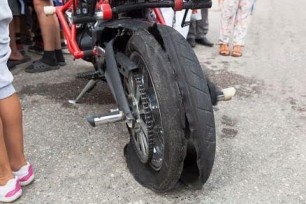
Know how to control your bike after a tyre burst
When you go out for a drive, hearing your tyre burst is the last thing you want. It can lead to a deadly accident. Many companies have now introduced tubeless tyres to reduce the chances of a blowout. However, there is very minimal time to control your bike if one does happen.
Since time is of the essence in such emergencies, it is important to know exactly what you need to do. So before going on your next ride, make sure you go through the following tips on controlling your bike after a tyre burst.
1. Do not hit the brakes instantly:
Whenever something goes wrong while driving or when we sense an emergency on the road, our natural instinct is to hit the brakes. However, this is not the universal solution to all emergencies. When you press the brakes suddenly, you may be thrown off your bike into the oncoming traffic.
If you are travelling at high speeds, more than 90 kmph, applying brakes suddenly can result in dangerous situations. Pressing brakes at high speeds can make the vehicle wobble, causing you to lose control of it. Instead, you should try rolling on the bike without using the brakes at all.
2. Maintain appropriate speed:
Speeding is one of the leading causes of accidents occurring on the road. When you go over the speed, say, more than 100 kmph, you are more likely to face a nasty collision in case of a tyre burst.
The chances of safely coming to a halt on time are much higher when travelling at slow/safe speeds. On the other hand, speeding will make your bike uncontrollable during a tyre burst and reduce or eliminate the chances of recovery afterwards.
3. Use engine braking:
If you have a bike with good engine braking, you can use that to slow down your vehicle instead of hitting the brakes. When your bike suffers a tyre burst, shift down the gears and accelerate using engine braking to slow down gradually. By this method, your bike will not suffer from the shock of sudden braking, and the chances of losing control of your bike will reduce significantly.
4. Keep your bike straight:
When experiencing a tyre burst, there isn't much time to avoid an accident or think about directions. However, to save yourself, you should try to keep your bike straight and steady. Turning the motorcycle or veering can worsen the situation.
Of course, if there is a danger zone in front of you, making a turn is the only choice. However, do this with acute linearity because a sudden directional change can unbalance the bike and result in a mishap.
Accidents are unpredictable and can happen when we least expect them. Keeping a check on your bike and conducting regular maintenance can prevent an unexpected tyre burst. In addition to it, secure yourself and bike in such uncertain times through individual accident insurance. Ride safe so that you enjoy riding your bike again!
Click HERE to buy the best individual accident insurance.
Disclaimer: The information provided above is for illustrative purposes only. To get more details, please refer to policy wordings and prospectus before purchasing a policy.

Five best tips to adhere for ensuring total safety of workers at manufacturing facilities and factories
Workers are the backbone of any manufacturing facility. Working relentlessly to get the best quality products is a result of their hard work. But sometimes, we tend to neglect the importance of these workers and take their safety for granted. Inspection of workspace safety throughout the day is one way to ensure a safe environment in the factory. This also shows that you care for your employees and their well-being. Safe working spaces have a direct effect on the productivity of the workforce.
In this article, we will discuss a few ways in which you can ensure the total safety of your workers.
1. Usage of machines and their maintenance:
Improper use of machines is one of the leading causes of workplace injury. Using tools and equipment for their intended purpose only is the first step to avoiding an accident. For the newer workforce, orientation sessions can be conducted to familiarise them with the latest tools and machinery. Regular cleaning and inspection should also be made part of their work to ensure added safety and extended lifetime of the machines.
2. Clear the aisles:
Aisles are the most used parts of a factory. Be it the moving of various things from one place to another or simply the employee movement within the facility. It is extremely important to frequently clean the space if the area is used for liquids and other greasy materials. Clean up any spillage immediately to ensure the best working conditions. Also, make sure that there are no small parts of the machinery lying around that might cause tripping and falling.
3. Keep emergency exits clear:
Blocked emergency exits have been the reason for some of the most dangerous and fatal hazards in manufacturing units and factories. To ensure safe access to the exit, avoid blocking emergency exits. A cluttered work area will also pose a danger if one wants to exit immediately. Placing different objects in their specified storage areas will help keep the work area clean and organised.
4. Eliminating fire hazards:
Working with combustible materials can pose real threats to your factory and the people working in it. If you work with combustion tools, keeping only the required amount at hand can ensure a lesser chance of any danger. When not using the chemicals, keep them stored in a cool dark place away from ignition points. Do not forget to store the waste in metal holders and dispose of it daily.
5. Take breaks:
Work-related injuries are caused due to strained muscles and over exhaustion by the workers. When tired and burnt out, one finds it difficult to focus and deliver top-quality work. Instead, taking regular breaks ensures alertness during work. Providing the workers with proper restrooms and clean drinking water facilities is another way to ensure that your workers are taken care of and that you care for their well-being. A rule of thumb is to allow a fifteen-minute and a thirty-minute break for working for four hours and six hours, respectively.
These are a few ways to ensure that your workers are safe at the facility. Investing time and efforts for the well-being of your workers will provide a dedicated workforce that delivers top-quality outcomes. To add more value to their lives and work, invest in public liability insurance to help them and your factory in an emergency and cover the medical and other expenses incurred during the process.
Public liability insurance is a safety net that provides financial protection if your business faces a compensation claim due to a worker’s injury or property damage. Do not forget to look for the best public liability insurance India options.
Click HERE to find out more about public liability insurance India.
Disclaimer: The information provided above is for illustrative purposes only. To get more details, please refer to policy wordings and prospectus before purchasing a policy.
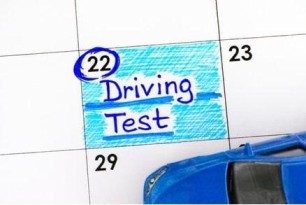
Eight best tips to help you pass your driving test
A driving test can be one of the biggest challenges for many. The exam can elevate multiple emotions and increase your stress about the final results. However, getting your driver’s licence and getting out on the road is a joyful feeling.
To help you pass the test with ease, here are a few tips that will come in handy.
1. Stay calm and do not panic:
It is normal to feel anxious and worried about the driving test. There are high chances of messing up when you are stressed. Therefore, avoid panicking during the exam and plan out your approach with a calm mind.
2. Get experience:
Practice and experience are two essential elements of passing the test. And both these elements complement each other. Without proper practice, you won’t be able to gain the experience that you might need. Get to know all the rules and regulations, and have an experienced driver to guide you on the dos and don’ts of driving.
3. Take the car that is familiar to you:
One of the critical tips to pass the driving test is to take your car with you. An unfamiliar vehicle can make giving the exam challenging. For example, if it rains, you will be comfortable handling your car’s controls rather than searching for the controls in a vehicle that is new to you. Another benefit of taking your car is that you will be familiar with the car’s judgment, and the test will go easier.
4. Use both hands for steering the wheel:
For a positive result and better judgment, use both your hands to get the grip of your steering wheel. Using only one hand may create difficulties in driving, resulting in a failed driving test.
5. Learn to drive in different conditions:
Weather is unpredictable. Hence, you must learn how to drive in different weather conditions, so you are always prepared in case of any sudden weather changes. Furthermore, practising driving in various weather conditions will help you be on the safer side.
6. Keep your basics right:
It is common for people to forget the basics while they are tense. Due to nervousness, standard rules such as checking mirrors can slip from the mind. Avoid making common mistakes like not checking the surroundings, lack of focus while reverse parking, and more. Keeping your basics right will help ease the burden and ensure a favourable outcome from your driving exam.
7. Do not hesitate to ask questions to the examiner:
Often, people feel scared to ask questions to the examiner in a fear that they will sound stupid or what the examiner might think. If you are unclear about what the examiner asked you to perform, do not hesitate to ask them to repeat what they said. Open communication is the key to passing your driving test without messing up.
8. Arrive at least 30 minutes before the given time:
Do not panic and rush to the location at the last hour. Doing so will create unnecessary stress and put you in a panic mode, affecting your driving exam. Therefore, get there 30 minutes before the scheduled test to get an idea about the surroundings.
Driving tests can be cleared quickly with a calm mind and following the tips mentioned above. Once you pass the tests, ensure that you follow all the traffic rules. Always carry essential documents with you, such as your driving licence, PUC, online car insurance details, so that you will be all clear even if the traffic police stops and question you.
Click HERE to know more about online car insurance plans best suited for your car.
Disclaimer: The information provided above is for illustrative purposes only. To get more details, please refer to policy wordings and prospectus before purchasing a policy.
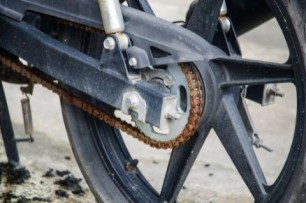
Here's how you can fix the chain slipping problem in your bike
The chain on the motorcycle is one of the essential parts that helps its swift motion. A loose or malfunctioning chain would restrict the vehicle's movement. Regular maintenance and oiling are a few ways to ensure that the chain on your bike is working correctly. However, even after proper upkeep, we often encounter situations when the chain is loose. One of the main reasons for loose chains is untightened bolts. Other reasons can be a worn-down chain, mismatched teeth alignment, or the wrong sized chain.
Loose chains can have hazardous consequences. You can lose control of your bike, which can be threatening, especially on a busy road. Chain breakage can hurt the biker's leg and cause injuries. It can also get caught between the wheels and cause an abrupt stop, leading to the bike toppling over.
In this article, we will discuss a few ways to avoid the constant slipping of the chains.
1. Fixing new chains:
Brand new chains tend to stretch a little. The interlinking joints wear into each other gradually. It is advisable to ride at least fifty kilometres to loosen up the new chain a bit. Since the quality of chains can vary depending on the company and the metal, riding for long distances allows the new chain to adjust and get to the optimum stretch. Once you feel like the chains have loosened up a little, you can tighten them. After this initial step, you would not need to worry about the chains for some time.
2. Tightening the bolts:
Sometimes the bolts are not tight enough or become loose over time. Talk to a mechanic and understand how much the bolts need to be tightened to keep the chain in place and prevent it from slipping away.
If you are someone who goes off-roading and manoeuvers through treacherous tracks, then this tip might be helpful to you. The constant jerks and tension that your bike goes through can also lead to the loosening of the bolts. Using a lock nut can help prevent these bolts from loosening.
3. Replacing the sprockets:
If you notice that the teeth on your chains have been worn down, you must replace them. Even if only one tooth has been affected, it can cause damage to the others as well. So timely replacement of the sprockets is vital to ensure that your chain lasts longer.
4. Changing the chain:
Over time the chains experience considerable wear and tear and can have almost no functionality. This will require you to make changes and alterations to the chain constantly. If you face this problem frequently, it is high time to consider changing the chain altogether.
These are a few ways to ensure your chain is working correctly. Chain lubrication is another way to ensure your chain lasts longer and remains intact in its position. A well-functioning chain is vital to the overall health of the bike.
Worn-out chains can cause severe accidents and be dangerous for yourself and others on the road. Broken chains can impact your bike's performance. To safeguard yourself against repair expenses, you must look into bike insurance online. With the ease of technology, now you can browse through multiple options and make hassle-free investments in the best bike insurance that satisfies your requirements. By buying bike insurance online, you get an additional advantage of instant service and a reasonable premium by eliminating intermediaries.
Click HERE to check out bike insurance online.
Disclaimer: The information provided above is for illustrative purposes only. To get more details, please refer to policy wordings and prospectus before purchasing a policy.
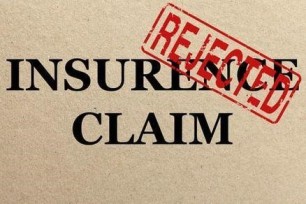
Here are ten reasons why motor insurance claims get rejected
We all know motor insurance has been made mandatory in our country. The purpose of purchasing car insurance coverage is to assure financial protection for the vehicle if it is involved in an accident.
When you file a claim with your insurer for automobile damage, you expect them to reimburse you as soon as possible. There are three possibilities in that situation: your claim gets granted, your insurance company may request further information, or your claim gets denied. And often, motor owners fail to get their car insurance claims resolved to their satisfaction.
If you’re facing a similar circumstance, you might want to investigate the following causes for claim denials.
1. Driving while intoxicated:
If the driver engages in driving under the influence of alcohol or other intoxicants, in that case, the insurer will deny the claim.
2. An unreal claim of the No Claim Bonus (NCB):
The insurer refuses any claim for NCB falsely declared and cancels any benefits under the policy’s damaged section.
3. Unidentified or unauthorized driver:
The claim gets rejected if the driver doesn’t possess a valid driver’s licence or if the permit is fraudulent, expired, or for a different vehicle class. This can also happen if someone besides the registered owner is driving it.
4. Delay in paying the premiums:
Go through your policy to find if it grants you a grace period to pay the premium beyond the deadline. Not paying premiums on time denies the claim and is one of the most common reasons. Avoid delays and buy motor insurance online for convenient paying options.
5. If there is no evidence to prove the crash happened:
Having no photos of the scene or any other documentation of the collision or car damage may force the insurer to deny your claim.
6. Claim of non-accidental loss:
The insurance doesn’t cover the wear and tear of your vehicle. Therefore claiming any damage that isn’t accidental might result in the claim getting rejected.
7. Confidentiality of information:
When you buy motor insurance online, you must provide the insurance company with every personal detail and update the same if required. This includes your name, address and any past car accidents. The insurer possesses the power to reject your claim due to non-disclosure.
8. Automobile not appropriately parked:
If your vehicle was not in a secure location during the time of theft or crash, your claim gets denied. Therefore, the insurer will always ask if you had parked your car correctly.
9. Missing monitor or safety device:
Claims get denied if you haven’t installed alarms, locks or tracking devices in your vehicle despite being mentioned.
10. Ongoing inspection:
Most insurers demand that your motor be examined before purchasing insurance. It lets them know of all harm that has already occurred. Insurers have the power to reject your claim at any point during the insurance claim procedure if you fail to follow this protocol.
After a vehicle accident, the last thing you want to deal with is an insurance claim denial. Repairing an automobile may burn a hole in your pocket without insurance plan coverage. Focus on the points mentioned earlier to reduce the risk of a rejected insurance claim. Check the reviews of other customers for their claim settlement experiences with insurance companies before you buy motor insurance online. So, follow the above tips to avoid the situation that leads to denial of your insurance claim.
To buy motor insurance online, click HERE .
Disclaimer: The information provided above is for illustrative purposes only. To get more details, please refer to policy wordings and prospectus before purchasing a policy.
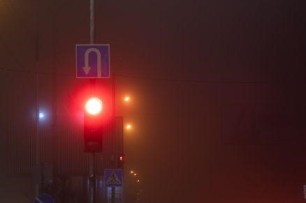
How can non-functional traffic lights affect your journey during the night
Traffic signals are an essential part of road safety. These signals are installed at intersections and busy roads to help control the movement of vehicles and avoid unnecessary congestion. They are exponentially effective during the night time when drivers generally tend to break the rules and cause mayhem on the road, which could lead to severe consequences.
But what happens when the traffic lights stop working? How can non-functional lights affect your journey during the night? By the end of this blog, you will understand the importance of traffic lights and how the situation could go haywire in their absence.
1. Risk of collisions:
At non-functional traffic lights, vehicles generally don’t stop or slow down, which usually leads to severe accidental consequences. This can put the safety of cars, drivers, passengers, and pedestrians in grave danger.
2. An increasing number of accidents:
Many underage drivers tend to drive fast and avoid maintaining the rules, which poses a massive threat to other vehicles on the road. And in the absence of traffic lights, this situation can get out of control. Speeding at unmanaged intersections invites potential safety hazards and can wreck many lives, thus increasing the number of casualties.
3. Massive traffic handling issues:
Traffic lights don't just avoid accidents; they also help handle the traffic emerging from all directions. The drivers who avoid waiting for their turns usually try to ignore the rules. They have to stop at the signals to be in sync with the other vehicles.
But, if the traffic lights are not functioning correctly, they get the liberty to jump signals without any trouble. It can cause considerable stir and chaos and make it challenging to handle the traffic.
4. Slow-moving traffic will be more chaotic:
We all have been stuck in slow-moving traffic. It takes up time and patience. Worse than slow-moving traffic is heavy traffic. It disrupts the movement and creates a jam for longer hours and distances. Traffic lights act as a saviour as it controls the direction of the fleet of vehicles and allows different sections to go first.
In the absence of functional traffic lights, the slow-moving traffic turns into heavy traffic as it will take a long time to clear the clutter. Vehicles have no idea of traffic movement at the defunct traffic signals. Overcrowding of vehicles becomes the cause of headaches for the drivers.
We discussed how the absence of traffic lights would increase the risk of road accidents. Even if the traffic lights are non-functional, we as responsible drivers must take all the necessary precautions from our side while driving a vehicle at night. Always slow down at intersections, give proper indication while making a turn, avoid over-speeding or honking.
Vehicles often get involved in accidents at night due to minor errors at the driver's part at the intersections. Investing in insurance is mandatory and of utmost importance to safeguard your vehicle against damage during unforeseen circumstances. Analyze your requirements, buy insurance from the best motor insurance company in India and always have a safe and protected ride.
Click HERE to know more about the best motor insurance company in India.
Disclaimer: The information provided above is for illustrative purposes only. To get more details, please refer to policy wordings and prospectus before purchasing a policy.

How can you prevent third-party data breaches
Outsourcing some of your important work to dedicated vendors is becoming increasingly frequent. These third parties are often not under your control and may not provide complete insight into their information security processes. Some vendors have strong security standards and risk management procedures, while others may not.
When your vendor's or business partner's computer system is hacked and sensitive data is exposed, this is known as a third-party data breach. Cybercriminals can target any vendor in your company ecosystem, and industry experts estimate that third-party companies are responsible for over 60% of all data breaches.
Data breaches are not only disruptive but also expensive. A breach can be challenging to recover from, especially for small businesses that cannot absorb the expenditure. However, public liability insurance can help enterprises survive. So, if you're a business owner, get a quote online to reduce your risk.
Avoiding a data breach can seem challenging as the volume of information grows and the threat landscape changes. However, this is not the case. Here are four helpful suggestions for preventing data breaches in your company.
1. Audit third-party vendors' cybersecurity:
It's critical to assess the risk of collaborating with a third party thoroughly. Neglecting this can create an alarming situation for your organisation. You can regulate the security assessment by incorporating questionnaires that inspect the security policies of the third party.
Thoroughly analyse all the security touchpoints to obtain a clear picture of vendor cyber risk. Companies should automate assessments to make them swift and scalable.
2. Incorporate a security policy into your contract:
Every organisation should have a written information security policy that covers all aspects of managing data on their network. This includes what data can be collected, how to manage it, how long each type of data should be retained for, the level of security controls required for each data type, etc.
3. Limit access to data:
There is a considerable risk of a breach if sensitive data is accessible to all vendors without limits. Therefore, limiting and regulating the data access to vendors must be practiced to protect your company against data compromise.
With so many distinct departments and vendors associated, it can get complicated. As a result, knowing all the risks pertaining to the organisation becomes critical.
4. Continuous monitoring:
The online world is fluid, and cyber threats are always changing. Furthermore, businesses constantly release new software and technologies that may expose them to attacks. Because of the ever-changing world, performing periodic cyber risk assessments of your third parties is no longer sufficient.
Instead, to avoid third-party data breaches, it's critical to keep an eye on your suppliers for new cyber vulnerabilities and receive real-time notifications about any changes in their procedures.
Following these four practices will lessen the chance of a data breach in your company. You can substantially improve cybersecurity by prioritising data protection and selecting the proper tools to assist you. Also, it's essential to have public liability insurance to pay for expenses related to a breach. Choose the right plan for your business by comparing public liability insurance prices online and adding a strong layer of financial security.
Click HERE to know more about public liability insurance prices.
Disclaimer: The information provided above is for illustrative purposes only. To get more details, please refer to policy wordings and prospectus before purchasing a policy.
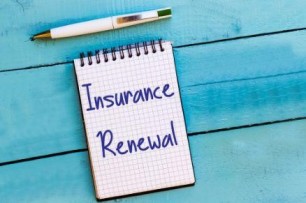
Insurance renewal: Verify these checkboxes before your buy bike insurance
Owning a two-wheeler not only makes the commute between two places easy, it also becomes a convenient option when you want to skip the traffic.
And, as you notice the several other benefits of using a two-wheeler, you choose the best services for your bike. A well-maintained motorcycle gives the best performance and comfort. Be it the service centre or the insurance provider; you do not want to take either of these lightly. However, owing to the fast-paced life that we are leading, it can become challenging to keep note of the next bike servicing or the renewal of your bike insurance.
Choosing the best insurance provider can be a daunting task, but you can find the best options and renew bike insurance online with little research and time.
This article will look at a few things you need to keep before renewing bike insurance online.
1. No Claim Bonus:
No claim bonus or NCB is a reward that your insurer provides when you have not made any claims in the previous year. An NCB is a testimonial of responsible driving. The benefit is in the form of concessions or discounts for future renewals. Even if you switch or sell your previous bike, your NCB stays with you and is applicable on the next purchase.
2. Coverage:
You don’t need to continue with your previous policy. You can opt for insurance policies that provide better coverage at lower premiums. Over your last term, you must have realised what other services you require. Hence, choose increased coverage or make changes as per your requirements.
3. Setting the IDV:
During every renewal period, it is advisable to change your IDV. You can decrease or increase the insured declared value that the insurance provider is bound to pay you in case of a total loss of your bike. Understanding IDV is crucial to assessing the correct value for your vehicle. Opting for lower IDV means you are underinsuring your motorcycle while choosing higher IDV means a higher premium.
4. Add on covers:
While renewing your policy, you can opt for various add-ons on your insurance cover. This is an intelligent way of reaping more benefits for a slightly higher premium. These add-ons are worth the extra premium. Zero depreciation, passenger assistance, roadside assistance, NCB protection are a few options you can choose.
5. Choose in advance:
It is illegal to drive a bike without valid insurance papers. So instead of waiting for the last minute to change or renew your insurance, it is best to start looking for options before the end of the policy period. This way, you can have ample time to consider various options before you make the final decision.
These are the few things you need to keep in mind before renewing your bike insurance. Do not forget to miss out on the renewal dates, as it can affect the continuity of your policy and other benefits.
Choosing the right insurance can be a challenging task, but do not be afraid to ask questions to your insurance provider to clear your doubts. Their job is to help you figure out the best options for you. Read reviews online, as they can help you assess the credibility of the company you are opting for. You can renew bike insurance online quickly and efficiently with these things in mind.
Click HERE to renew bike insurance online.
Disclaimer: The information provided above is for illustrative purposes only. To get more details, please refer to policy wordings and prospectus before purchasing a policy.
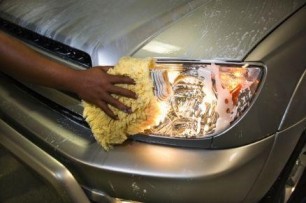
Take care of these things related to your car's headlights before setting off on a road trip
The thought of a road trip gets us all excited. It sure becomes very energetic, fun, and memorable with all our close family members and friends. As a thumb rule, you always double-check everything on your “packing list” to ensure you don't miss out on any essential item.
If you do this for yourself and your family members, how about double-checking your car before starting a road trip? Your car’s headlights also play a vital role in ensuring a safe journey during the night and avoiding any mishaps on the road.
In this blog, we will be discussing the checklist for the headlights of your vehicle that you need to take care of before starting your trip.
1. Got a fuse problem:
Check and see if you gather all information regarding the fuse blowout of your headlights. If you are sure of the damage, examine for loose wires. If you find any issues, fix them at the earliest. And if nothing works, replace the headlights (especially if there is a high beam bulb problem).
2. Do not delay replacement:
Examine the light emitted from your car’s headlights. Do you suspect that they have dimmed? If you conclude that your lights have dimmed (called burnout), you must replace the headlights with new ones to avoid risking your safety on the road, especially during the night time. Uneven terrains and night driving can be risky when you have burnt-out headlights. It poses threats of accidents and compromises the car's safety, the driver, the passengers, and other vehicles on the road.
3. Make smart changes:
Whenever you feel that there is a need to replace the light bulbs of your car's headlights, always make sure that you do so in pairs. If the light has dimmed, exchange the old bulbs for the new ones in twos. That way, it would make the headlights consistent instead of one old and one new light bulb, which would create a difference in the intensity of the light beam. It would make it difficult for other drivers to understand the indication and affect your visibility on the road.
4. Align the beams of light:
Turn on the headlights of your car and check the light beams closely. Make sure that the light is aligned and aimed at the road. If the light is directed towards the vehicle approaching your direction, it may cause an accident as the other person would find it difficult to see what is in front of them. This would result in a fatal crash endangering car occupants and other vehicles on the road.
These were some tips you could take care of related to your car’s headlights. Few other pointers include upgrading the versions of headlights compatible with your vehicle and other DIY hacks for which you wouldn’t always need a professional mechanic to help you with minor replacements, etc.
And while you ensure the checklist of your car’s headlight before heading on a trip, it is also essential to verify that your car insurance is updated. Keep track of your car insurance renewal dates to avoid interruption in the benefits and save your policy from lapsing.
Click HERE to know more about car insurance renewal.
Disclaimer: The information provided above is for illustrative purposes only. To get more details, please refer to policy wordings and prospectus before purchasing a policy.
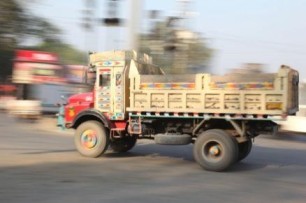
Implement these tips to ensure the safety of truck drivers by minimizing accidents
Driving trucks is considered to be a dangerous job in many countries. It requires more strength, focus, and training to drive a massive vehicle. Most trucks have more than six tyres, whereas large trucks can have eighteen wheels and more. Truck drivers have to be very cautious operating such heavy machinery with material weighing tons. They need to be careful on a busy road with smaller-sized vehicles around.
Trucks are an integral part of the transportation and logistics teams. They help move various supplies around several industries and within different sets of factories within a single sector.
In such scenarios, the training of truck drivers becomes essential. By training them about the rules and safety measures, you protect them and avoid the risk of accidents and subsequent medical costs and insurance claims. But what are specific pointers for truck drivers that they should follow strictly?
This blog will discuss all the measures they can take. Implement these tips to ensure the safety of truck drivers by minimising accidents.
1. Stay patient:
While driving such a giant vehicle, truck drivers need to ensure that they are calm, relaxed, and attentive. Even the tiniest anger or frustration can distract drivers who can have severe accidental consequences and potentially cause heavy damage to the truck, other vehicles, and people on the road. Drivers must avoid any road rage behaviour and mindset even when cut off or honked by other drivers on the road.
2. Seatbelts are a must:
Wearing your seatbelt is a universal rule for all four-wheelers and above. Trucks bear no difference here. It is even more necessary since trucks are enormous, and maintaining balance, sudden jerks, close calls with other vehicles, and poor road conditions can be tricky for a driver. You can lose momentum and control of your body during such sudden movements and putting your driving at risk.
3. Be on the lookout for blind spots:
Blind spots can make your life challenging as a truck driver. It is often difficult to see the positioning of other cars, and the side view and rearview mirrors might not be of a huge help due to the height and captured visibility. Hence, while driving the truck, it is suggested that they leave a gap around the corners. Keep a watch manually while changing lanes to avoid the risk of blind spots.
4. Use signals correctly:
It is crucial to know what each signal means and how it would impact you and other vehicles on the road while moving. Give the proper indication so that the car around you knows which direction you might be turning. Leaving the other drivers on the road hanging and anticipating your next move can cause dangerous collisions and accidents.
Other tips include carrying a bag of spare essentials for emergencies, avoiding alcohol before and while driving, having spare parts and tools handy, not using cell phones or any other gadgets while driving, etc. These measures are quite common and essential to implement earnestly.
That’s a wrap on how you can implement these tips to ensure the safety of truck drivers by minimising accidents. It is equally important to take care of your truck since it encounters different terrains, and long distances can cause wear and tear of the tyres and damage other parts. For such sudden circumstances, motor insurance will safeguard your vehicle. You can explore your options and buy motor insurance online to provide firm protection to the big machine.
Click HERE to know more about how you can buy motor insurance online.
Disclaimer: The information provided above is for illustrative purposes only. To get more details, please refer to policy wordings and prospectus before purchasing a policy.

Know about these protein rich foods that can be good alternatives for vegetarians
It is a widespread concern that healthy diets may not provide enough protein to the body. Muscle growth and maintenance, health of skin and hair are all dependent on getting enough protein. It also helps keep you satiated, which is essential.
Why is there a need for protein?
Proteins are made up of amino acids, and an adequate supply of amino acids is necessary for the normal development of our cells. There are several crucial parts of our bodies where proteins play an important role. These include our skin, nails, and other vital organs.
Many people are curious about how vegetarians can receive enough protein in their diets, but it's pretty simple. If you're attempting to stop eating meat and consume more veggies or turning vegan, these vegetarian sources of proteins can assist you in meeting your daily protein intake.
1. Lentils:
Adding lentils, or dal, to a daily meal is common in Indian cuisine. With each cup containing roughly 18 grams of protein, fresh salads, substantial soups, and dals laced with spices are just a few of the foods that can be made with them. Lentils are a good source of protein and fibre, which can aid in the maintenance of a healthy microbiome in the intestines.
2. Oats:
Eating oats is a simple and delicious way to increase the protein intake in your daily diet. In addition to being high in protein, oats are a powerhouse of soluble fibre. Clinical studies show that oats can help lower cholesterol and reduce the risk of heart disease. While not considered a total protein, oats provide a higher quality protein than some commonly consumed grains, such as rice and wheat.
3. Legumes:
In general, legumes are thought of as protein-rich foods because of their large concentration of essential amino acids. For example, chickpeas have roughly 15 grams of protein per serving, as well as a slew of other nutrients that will keep you strong, healthy, and fit.
4. Nuts:
Nuts are considered nutritional powerhouses. They are an excellent source of dietary protein for vegetarians and vegans alike. Nuts like almonds and cashews are a good source of protein and are considered a protein-rich diet.
5. Green Peas:
Green peas are a good source of vitamin A, potassium, and folate, all found in abundance in this dish. Simply adding green peas to your everyday vegetarian diet can help in supplying your body with the additional protein it demands.
6. Tofu:
Adding tofu to your plant-based diet can be a great decision since it is an excellent source of protein and minerals. Usually, people consume Tofu as a replacement or a veg-alternative to meatballs to add to their healthy lifestyle.
Final Words
If you're eating a nutritious diet, you're unlikely to have protein deficits as experienced by many vegetarians and vegans. The above list might serve as a starting point for anyone who wants to boost the consumption of vegetarian sources of protein.
Speaking of nutrition, if you are not regularly consuming essential nutrients and minerals via protein food items, your body may become vulnerable to diseases or infections. Hence, considering health insurance is an excellent idea to assist you in providing additional financial protection you always require to keep you stress-free and ensure your well-being.
Click HERE to know more about different health insurance plans.
Disclaimer: The information provided above is for illustrative purposes only. To get more details, please refer to policy wordings and prospectus before purchasing a policy.

Let us know more about 'Act of God' insurance and their clauses
The events that are not under any human's control, cannot be predicted, and are bound to happen, are called an "act of God." The unavoidable destruction caused by natural disasters, including earthquakes, floods, cyclones, volcanic eruptions, asteroid collisions, etc., are considered "act of God". One cannot estimate these vast events, and occurrences cannot be counted at their time of happening. They happen, and humankind must bear the passive consequences of such active events.
Did you know that insurance covers damages due to “act of God” events? Let's learn more about the chronology of events and decisions taken by the government and other companies and help you become more knowledgeable about insurance and its clauses.
1. What exactly is the "Act of God" insurance?
This insurance covers damages and losses done due to incidents that come under the act of God. But if there is any harm or damage done to the property due to human ignorance and negligence, family dispute, etc., you will not be reimbursed and covered through the act of God insurance.
2. Is the "Act of God" coverage the same everywhere?
A lot of similar events are covered in the act of God insurance. The similarity is relatively high. But certain events might be an odd one out in a policy and is not included for other circumstances. You need to keep yourself up to date with the clauses, terms, conditions, prices, renewal rates, exceptions, etc.
3. Do you need to assess your insured properties and assets?
You need to evaluate your properties, assets, etc., that are insured. It is essential to assess the risks of those possessions and chart out the potential risks that can happen under God's name. This will help you clarify the dangers and negative possibilities and how you could recover from them using the liabilities that come under the act of God insurance. These risk evaluations will help you reap the benefits and help spread awareness about the act of good insurance and its pros and cons.
Another important clause is the extreme climate conditions you need to be aware of. You must purchase the act of God insurance for third-party protection and security of your properties, etc., against all unavoidable dangers. The policy is eligible for termination if the authorities observe any inconsistencies, negligence, zero remorse, and rectification of mistakes. Examine the policy in detail and watch for any hidden clause and terms and conditions that might devoid you of the "Act of God" insurance benefits. You need to present the proof of these events to claim your insurance and reap the benefits that come along with it. Also remember, insurance companies may limit the coverage for acts of God under some specific terms and conditions.
Apart from the "Act of God" events that you might or might not see coming, you need to take care of the risks which can make you liable/responsible for inevitable mishaps (e.g., a machinery accident in your factory causing injuries to the workers). You need to purchase public liability insurance in India to cover such alarming accidents. Explore your options and determine which insurance plan suits you and your business's needs.
Click HERE to know more about the best public liability insurance in India.
Disclaimer: The information provided above is for illustrative purposes only. To get more details, please refer to policy wordings and prospectus before purchasing a policy.
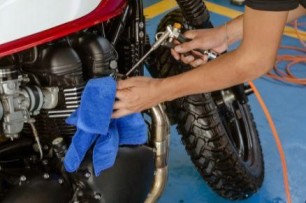
These good habits can increase the longevity of your two-wheeler
As a bike owner, you enjoy all the perks that come with it. Whether going to the nearest grocery store to get your monthly supplies or taking an impromptu long trip, one can not deny the many benefits of owning a two-wheeler. But as with great power comes great responsibility. Having a bike also means dedicated time to take care of it. So, it is your responsibility to keep your bike moving and functioning.
Irrespective of how often you drive your two-wheelers, it is susceptible to daily wear and tear. It is, however, possible to increase the longevity of bikes to some extent.
In this article, we will take a look at a few ways in which you can increase the longevity of your two-wheeler. Extending a bike’s life is not a very challenging task. You need to be slightly attentive to the signs indicating any faults and provide regular upkeep without constantly worrying about maintaining it.
1. Regular servicing:
Regular servicing ensures that the bike performs optimally. Your service cycle depends on how old your bike is. Speak to an expert and understand the servicing cycle for your two-wheelers. Things such as changing engine oil, ensuring proper functionality of brakes, checking for corrosion are a few things to note during the next servicing.
2. Riding habits:
The lack of coordination between the clutch and gear affects the bike’s performance in the long run. This puts an unnecessary load on the engine if done constantly. Giving ample time to yourself to understand gear shift and the bike's speed will help you perform better on the road.
3. Manage the load:
Overburdening the bike during long road trips can have dire effects on the vehicle. You must balance out excessive workload with regular maintenance. However, if you overload the bike with minimal aftercare, the bike is bound to break down eventually.
4. Keep it clean:
Maintaining your bike through regular cleaning can help you increase the functionality of your two-wheeler. Use soaps specifically meant for your bikes to wash with water and a cloth. Always wipe the bike thoroughly after every wash. After driving through rains or dirty tracks, wipe down your bike to avoid dust and dirt accumulation to avoid corrosion.
Dust and dirt can affect the engine’s functionality and spoil the paint job on the vehicle. A dirty bike is more susceptible to various problems such as rusting that can impact its overall performance.
5. Take note of minor changes and problems:
Usually, vehicles produce different sounds or low-performance levels as an indicator for various problems that are likely to arise. Do not neglect the problems, immediately take your two-wheeler to the service centre and get it checked thoroughly.
These were a few things to keep in mind if you want to ensure a long life for your two-wheelers. Sometimes no matter what you do, your bikes can still cause troubles and might need extensive servicing and change in parts. All changes said and done can come out to be pretty expensive.
It is a wise option to invest in 2 wheeler insurance to cover the damages, cost involved in repairs, and replacement of parts. Buying an ideal 2 wheeler insurance is also a good habit of increasing the longevity of your two-wheeler and can be beneficial for it to cover more distances.
Click HERE to know more about 2 wheeler insurance.
Disclaimer: The information provided above is for illustrative purposes only. To get more details, please refer to policy wordings and prospectus before purchasing a policy.
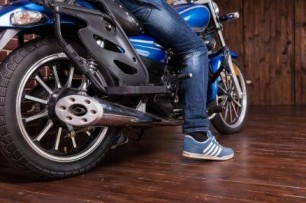
These can be the probable reasons for your bike failing to start
It can be highly frustrating for any rider to turn the key in the ignition, and the vehicle fails to start. There are several reasons for your bike giving way and facing trouble starting smoothly. While a motorcycle's design is simple to understand, it can be challenging to point out the reasons for these ignition issues. However, knowing about the possible reasons causing these issues is essential in maintaining your vehicle and fixing these problems.
You may consider the extreme winter season to be the main reason your bike fails to start, but there are several more. While you can always rely on bike insurance for critical problems, you can read the points below to learn the probable reasons for the two-wheeler failing to start.
1. The battery is weak or dead:
Some two-wheelers are designed to start using an electric self-start. Their motor is dependent on the battery. If this motorcycle does not start when you press the self-start button, it could be because the battery did not transfer a sufficient charge to kickstart the motor.
A weak or dead battery cannot provide this high voltage to the engine, and therefore, the electric self-start won't be operational. In this case, you may have to call a mechanic to either recharge or replace your bike's battery.
2. Too cold:
This frozen state of the bike is caused mainly due to extreme cold weather conditions. Combustion doesn't occur correctly as the gasoline in the vehicle doesn't evaporate when mixed with air. There might be ice build-up that is causing the malfunction. You can use a space heater directly on the engine for 15-20 mins to get your motor running.
3. The fuel tank vent is clogged:
Since the fuel tank vent in most motorcycles is too narrow, it becomes inconvenient to supply fuel to the intake system consistently. The vent can get clogged due to no regular maintenance and cleaning, and the fuel supply gets restricted. If you find yourself stuck in this mess, try to unclog the duct with a thin pin or get it cleaned.
4. Blocking intake or exhaust:
A blocked airbox or a blocked muffler exit may be another significant reason your bike won’t start easily. The motorcycle’s mechanism is dependent on the intake and exhaust system, and your bike will give away if it is restricted or clogged for some reason. Get it checked by a professional as soon as possible to avoid further damage.
5. The clutch does not engage properly:
The clutch lever needs to be correctly pulled to start your bike successfully. Often, problems can occur in the ignition when the clutch does not engage correctly. Try again by bringing your transmission into neutral and then starting the bike. Sometimes, riders turn off their bike while in gear and forget to put it back into neutral. You must set your bike into neutral and start again.
6. Problems with the spark plug wire:
A loose or cracked spark plug wire can also cause your bike to fail to start. Constant heating of the engine will eventually deteriorate the material of the wires in the motorcycle over time. Places with extreme weather conditions can be a catalyst in the cracking of the spark plug wire. If you find any cracks or slits in your bike's wires, replace them to avoid any issues.
These are a few likely reasons why your bike may fail to start. While investing in a reliable bike insurance plan can secure your vehicle by covering the expenses involved in the garage repairs, it is essential to know about the issues that could arise with your two-wheeler. Being aware and getting to the root of every problem can avoid future losses.
Click HERE to buy a comprehensive bike insurance plan for your new bike.
Disclaimer: The information provided above is for illustrative purposes only. To get more details, please refer to policy wordings and prospectus before purchasing a policy.
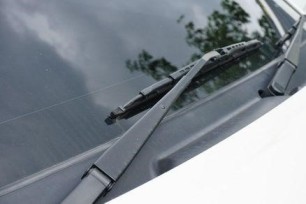
Here's why windshield wipers are important
What are the primary things that come to your mind when you think of car maintenance? Oil changes and engine inspections. But what most of us forget are windshield wipers. These underrated blades are just as crucial as the engine of your vehicle. We do not need them often, and wipers don't seem to do much in our daily driving. So, it's assumed that they don't require much attention. However, during unexpected changes in the weather, wipers are an integral part of your vehicle maintenance to ensure safe driving.
Why are car wipers important?
The first pair of wipers for cars were made back in 1903, and since then, their use has advanced significantly. These key technologies improved car safety and allowed drivers to travel in adverse weather conditions. Latest windshield wipers come with a variety of enhanced functions and settings. Modern devices have been built to be simple to use, effective, and maintain clarity while driving.
Importance of maintaining wipers:
It is common knowledge that clear vision is the most critical driving component. Appropriately functioning wipers are a way to ensure complete visibility for the driver.
If you don't repair your windshield wipers on time, the blade may tear and break away from the wiper. As a result, the bare metal or plastic wiper arm can scratch the windscreen as it scrapes over it. Damaged windshield wipers can also produce scratches on your glass, resulting in higher repair costs. It's far easier to examine and change your wipers regularly than paying for windshield repairs.
Windshield wipers' care varies from place to place, depending on the region you live in and their frequent use in the vehicle. However, the wiper blades are supposed to be replaced every six months.
How to clean / replace your wiper blades:
Regular cleaning of the wiper blades should be done to increase their efficiency. You may begin by wiping the wipers down with clean towels and mild detergent. Then clean the edge of the blade with a towel soaked in alcohol to get rid of any leftover grime and dirt.
Replacing wiper blades regularly is a low-cost investment in your driving security. To begin, measure the durability of your wiper blades or consult your car's owner's handbook for the correct information. After that, you may buy and install fresh blades. Next, lift the arm of the windshield, press on the little button under the wiper, and slide the blade off downhill to remove the old blades. To swap the blade, tighten the new blade onto the arm. When done, a clicking sound should be heard.
Safe driving requires total visibility of the front view while you are in the driving seat. When rain or snowfall strikes, be sure you're ready with a clean windscreen. Therefore, ensure to inspect your wiper blades regularly and replace them when required. Also, add washer fluid and make sure to maintain the right combination. Maintaining your wipers and washer system is a simple and inexpensive method to keep you and your family safe while driving. Also, do not forget to invest in a reliable motor insurance India policy to keep your vehicle insured and obtain the benefits that it has to offer.
Get the best motor insurance India policies HERE .
Disclaimer: The information provided above is for illustrative purposes only. To get more details, please refer to policy wordings and prospectus before purchasing a policy.
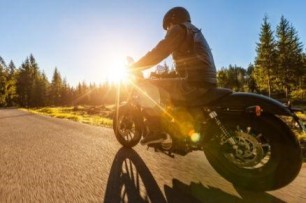
These important tips can make riding in the bright sunlight easy for new riders
We often hear people talk about the beautiful roads and the impeccable views that are part of road trips. Especially during winters, we listen to riders talk about taking their bikes out to enjoy the sun's warmth above them. And, summer brings exciting travel plans to exotic destinations.
However, before setting for a bike ride on a sunny day and making your trip experiential and worthwhile, consider the following tips.
1. Sunglasses or tinted visors:
If the sun is glaring right at you from the opposite direction, it becomes challenging for the riders to see the road ahead and the fellow drivers on the road. Getting a pair of sunglasses ensures that your vision is not tempered and you have a clear view of everything on the road.
If you are someone who does not fancy wearing a sunglass, opting for a tinted visor is a great alternative. Tinted visors can double up as sunglasses and a face shield to prevent your skin from burning directly under the sun.
2. Wear appropriate gear:
If you are traversing through long stretches of roads, it is best to wear a bright-coloured vest. This will ensure that the person coming from the opposite side notices you, thus preventing a collision.
Another thing to note is that driving through harsh conditions will require you to wear anti-abrasion and impact-resistant gears. Opt for gears with mesh panelling to help you remain cool but protected against extreme heat.
3. Carry water:
Driving under the sun can cause dehydration and exhaustion. Take pit stops in the middle to drink water and rest. It is extremely important to maintain your body’s water levels. As you start sweating, your body will lose water. This can lead to heat-related illnesses. Do not forget to carry electrolytes for added benefits.
4. Vent the helmet:
Venting the helmet can help in cooling down immensely in hot weather. While riding, keep the vents open to dissipate the heat and allow air to sleek in for freshness.
5. Wear gloves:
The gloves will act as a barrier between your palm and the accelerator to avoid sweating and reduce the risk of accidents. They even protect your skin from direct sunlight, preventing the palm skin's tanning.
6. Apply sunscreen:
Ensure to lather your skin with enough sunscreen to protect the exposed body parts. Use sweat and water-resistant ones with at least SPF 30 rating.
7. The 12-3 rule:
Unless absolutely necessary, skip the riding in the peak hours between 12:00 noon and 3:00 pm. As this is the hottest period of the day, it is best to take a break. You could use this time to grab your lunch and restock your energy and water supplies.
These are a few tips that you can follow to make your drives easy and less tiring. However, if you feel dizzy or lightheaded, your body could be overheating. This could lead to heat strokes and can be fatal. Under such circumstances, it is best to pull over and rest under the shade or in an airconditioned restaurant or supermarket.
Long road trips can be exhausting for you and your bike. Take a day off to relax and drop your bike off at the nearest service station for a quick check-up before you set out on your next trip. Add value to the whole experience by investing in bike insurance to sit back and not worry about the expenses you might face later.
Click HERE to know more about bike insurance.
Disclaimer: The information provided above is for illustrative purposes only. To get more details, please refer to policy wordings and prospectus before purchasing a policy.

Try these six remedies to treat food poisoning at home and get instant relief
Trying various foods is always tempting but can also cause food poisoning or other stomach related problems. We experiment with new foods and cuisines but often overlook the consequences.
Food poisoning is mainly caused by bacteria, viruses, and parasites in food. Symptoms include vomiting, diarrhoea, nausea, abdominal discomfort, fever, etc. Food poisoning is accompanied by a stomach infection that makes your body lose more water than usual. Drinking plenty of fluids and avoiding solid foods is the first line of defence. As innocuous as it may appear, food poisoning can become life-threatening if not handled promptly.
However, you can treat minor cases of food poisoning at home with a few common everyday items. Read more to know about these magic ingredients from your kitchen that will soothe your food poisoning.
1. Garlic cloves:
While the idea of gulping raw garlic may be unsettling, garlic is famous for its antibacterial, antiviral, and antimicrobial properties. These characteristics make it an excellent home remedy to combat food poisoning. Take a couple of cloves of garlic and chew on them. Afterwards, drink some warm water.
2. Ginger:
Ginger helps decrease the symptoms of food poisoning. Its anti-inflammatory properties soothe your stomach lining. Boil a cup of water with one scoop of grated ginger in it. Alternatively, you can directly eat ginger slices.
3. Cumin:
Cumin seeds, also known as jeera, provide immediate relief. Boiling one teaspoon of cumin seeds in water can cleanse your system. You can also combine it with one teaspoon of coriander juice and a pinch of salt. It stimulates the activity of digestive enzymes in your body, thereby improving digestion.
4. Lemon:
Lemons have anti-inflammatory, antiviral, and antibacterial qualities that fight the microorganisms causing food poisoning. Drink warm lemon juice and stay hydrated to reduce the pressure on your stomach.
5. Curd with fenugreek:
Curd contains beneficial bacteria that aid in the fight against other harmful bacteria in the body. Fenugreek seeds also have a high amount of soluble fibre, which absorb water and act as a lubricant, aiding in treating gastrointestinal discomfort. Consume one teaspoon of curd with one teaspoon of fenugreek seeds to ease your stomach.
6. Holy basil:
The best herb against food poisoning is holy basil or tulsi. This plant has many antibacterial characteristics that can help lessen the impact of food-borne diseases. For immediate relief from the symptoms of food poisoning, chew on a few fresh leaves that can be easily spotted in all Indian homes.
These are some tried and tested home cures that have proven to be effective through time. While some may notice a significant improvement in symptoms, others may not. In such circumstances, you must act quickly and seek medical assistance at the nearest health care facility.
It's always wise to plan for such unforeseen concerns by investing in health insurance. While you're taking these steps to cure food poisoning, your health insurance covers your medical bills in case of an emergency. Get one immediately from online health insurance companies and be secured by comprehensive coverage that can act as a strong safety net.
Click HERE to learn more about health insurance policy for you.
Disclaimer: The information provided above is for illustrative purposes only. To get more details, please refer to policy wordings and prospectus before purchasing a policy.
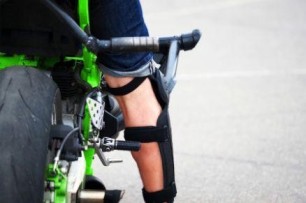
These are a few mistakes done by riders with short height
There is no denying that riding bikes is a dangerous sport. It requires a lot of focus, physical work, mental stability, and risk-taking ability. It is an expensive hobby or passion to take up. Professional riding bikes are costly, and the riding gears demand a heavy investment.
While no sport is supposed to discriminate between different attributes of the sportspersons, the short-heightened riders need to be a little careful while riding their bikes. It can be a bit difficult for them to control their bikes due to their short height. Short riders can make a few mistakes out of no will of their own but due to their physical features.
How would you identify the errors these riders are making? This blog will discuss those discrepancies caused by the riders.
1. Not paying attention to the gear:
It is alright if you do not want to purchase the most expensive biking gear available. But skipping out on paying attention to the gear, quality gloves, and boots could negatively affect your riding. Boots keep your feet in position, and the heels give you a certain height which would help you gain control of the handlebar and the bike in a better manner. Premium quality gloves would help you handle the control of your bike and avoid any slips of the gears, throttle, steering, and clutch, even on tricky and rocky terrains.
The gloves and the boots solve your height issues and give you better control of the bike. They help you avoid any accidents or compromise your safety. You would be more efficient and capable of managing the bike better and have a comfortable journey.
2. Not working on your driving skills:
Several riders with short height pay way too much attention to the hardware of the bikes. While it is essential to learn and have a detailed understanding of the features and the hardware that goes into building the bike and making it function properly, it is equally important to work on your driving skills.
Honing your skills would help you achieve better control in stressful situations and increase your response skills which would come in handy when you have a sudden decision to make while riding. You can focus on specific skills that would help you maximize your bike's output, not put your safety at risk and gain better access and control of the motorcycle, thus nullifying the issues that might come with having a short height.
3. Position your bike correctly:
Learn how to change your motorcycle positioning. If you have plans to lower it, think again. You will reduce the ground clearance, which will affect your ability to lean your bike correctly. This might also increase your chances of sudden falls and possibility of disbalance putting your safety and bike performance at risk.
Some other things you can take care of are leaning left while stopping, practicing with a good bike on which you can put your feet flat on the ground, etc.
That’s a wrap on the few mistakes made by short-height riders. While we discussed the specific type of riders here, such mishaps are not only limited to short-height riders. A bike can get severely damaged in all these scenarios, and the rider’s safety can be compromised. Get your bike insured to avoid such risks and cover the damages involved in sudden circumstances. You can explore your options, purchase two wheeler insurance online India, get the best premium with plethora of benefits, and stay financially stress-free.
Click HERE to know more about buying two wheeler insurance online India.
Disclaimer: The information provided above is for illustrative purposes only. To get more details, please refer to policy wordings and prospectus before purchasing a policy.
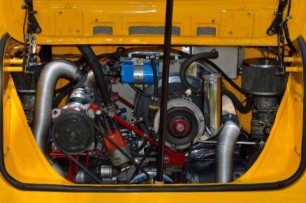
Which is a better option for buses: rear-engine or front-engine
We often see new models and designs of the buses plying in the neighbourhood. These buses with new technologies are not only designed to look aesthetically pleasing but also to support aerodynamic needs and the vehicle’s functionality.
Bus engines and their placements play a crucial role in the handling of the bus, its performance, and impacts the passenger experience. It is difficult to make a call as to which engine is better suited for the bus. Various characteristics factor into what kind is better, and we will look at them.
In this article today, we will discuss the pros and cons of rear and front engine buses so that you can have a detailed understanding of both options.
Benefits of the rear engine:
1. The rear engine does not block the centre or the front of the bus, thus making it easier for passengers to walk and aiding in the free flow of traffic.
2. Rear engine buses are comparatively lighter than front-engine buses.
3. The rear-engine buses have a quieter cabin due to the location of the engine at the rear. This gives a better driving experience for the drivers with less disturbance from the engine noise.
4. It aids in better visibility and comfort for the driver.
Disadvantages of the rear engine:
1. The engine takes up space in the back, thus providing lesser luggage space.
2. Rear engine buses are more expensive as compared to front engine buses.
3. Since the vehicle’s entire weight upon an uphill journey is concentrated on the back, it becomes difficult to traverse hilly roads.
Now, let's look at the merits and demerits of the front engine.
Benefits of front engine:
1. The weight of the bus is well balanced on all wheels.
2. The different parts of the bus, such as the engine, clutch, etc., are easily accessed for any repair or maintenance.
3. Better cooling since the radiator is attached to the front, and it gets a natural draft of air due to the forward movement of the bus.
4. There is more luggage space at the back of the bus.
Disadvantages of front engine:
1. Since the engine is in the front and amidst passengers, it can be loud for everyone.
2. Heat emanating from the engine makes driving inconvenient.
3. The horizontal steering becomes challenging to maneuver for drivers.
4. Reduced cabin space due to the presence of an engine in the cabin.
These are some of the benefits and disadvantages of each of these buses and their engine types. It is difficult to say which is better simply based on the positioning of the engines. Various other factors, such as fuel efficiency, driving comfort, the safety of people on-board, etc., are to be considered when investing in heavy-duty vehicles. This article solely focussed on the engine type to help you understand the different functionalities of said buses.
Even when investing in the best option available, you have to take care of your vehicle’s regular maintenance and upkeep. Keeping a tab of service cycles, investing in good motor insurance, and timely online motor insurance renewal is crucial for your vehicle’s longevity and efficient functionality. Hence, do not skip on these essential aspects of vehicle care.
Regular maintenance can help you extend the lifetime of your big machines. At the same time, motor insurance acts as a safety net to guard you against any expense that you might incur due to accidents, thefts, or other forms of damage.
Click HERE to know more about online motor insurance renewal.
Disclaimer: The information provided above is for illustrative purposes only. To get more details, please refer to policy wordings and prospectus before purchasing a policy.
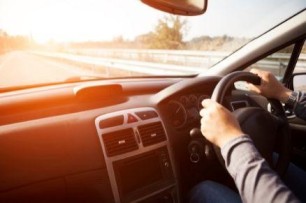
Wondering how to keep your car cool during summers? Here are the best ways to do so
Summers in India are pretty difficult to handle as the temperature can exceed over 45 degrees celsius, making it arid and humid. Humans can quickly get affected due to such hot weather, and it becomes unbearable to travel anywhere. While you can take care of yourself by drinking sufficient fluids and staying hydrated, your car needs an equal amount of maintenance,
especially in the summers. You must have seen how difficult it gets to drive anywhere during the hot season. Due to the temperature rise, the car becomes too hot to sit in and drive during a peak summer day.
Are you wondering how to keep your car cool during summers? Read this blog till the end to understand the tips to get the best results and protect your car from high temperatures.
1. Support solar technology by getting a solar-powered fan:
You can get a solar-powered fan for your car to cool down car interiors. It's better to use the sun's energy and heat instead of getting roasted. The solar fan helps balance the air inside the vehicle by extracting the hot air from the cabin. Regulating the process of constant circulation prevents overheating and avoids the stuffing of hot air.
2. Cross ventilation is a solution:
We all know how cross-ventilation works in our homes, kitchens, etc. Similarly, whenever your car is parked in the summers, especially if it is parked under the sun, it would be an intelligent solution to open the car's windows just enough to let the air pass from one window to another and circulate inside the cabin. Thus, a single temperature will not be maintained, and the car would be more comfortable to drive.
3. Park at the right place:
Look for some shade and park your vehicle under it to maintain a relatively low temperature for the car's body. A shade will protect the car's body from getting overheated due to the extreme temperatures and exposure to the direct sun, thus making the cabin bearable to sit and travel in. You can also cover your car to safeguard it against the hot weather, but it is a little more hassle than finding fully covered spots which provide shade to your vehicle.
4. Think about your steering wheel:
Summers spare nothing, not even the steering wheel of your car. Due to the hot climate, your car cabin temperature rises and affects the steering wheel, making it too hot to hold. You can cover your steering wheel with a light cloth to counter this. Avoid darker steering covers as they tend to absorb heat from the sun, making it unbearable for you to touch the steering wheel.
As we discussed protecting your car against high temperatures and how you can keep it cool, it is also essential to safeguard your vehicle against other damages that you may or may not see coming. Purchasing car insurance is an intelligent choice to cover your priceless possession under the safety net of financial benefits. But you need to make sure that you are aware of all the terms and conditions, including the new car insurance rates, before you make your final decision.
Click HERE to know more about the new car insurance rates.
Disclaimer: The information provided above is for illustrative purposes only. To get more details, please refer to policy wordings and prospectus before purchasing a policy.
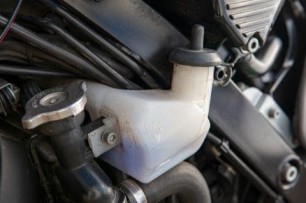
Is it good to ride your bike on reserve all the time
Fuel is one of the essential things needed for your bike to function efficiently. It generates power in your bike and makes it operable. You cannot risk being low on fuel or having no fuel in the tank. But there are times when you forget to fill up the fuel tank, and get stuck in an area with no petrol pumps around, or the fuel starts leaking, and you don't notice until the very end. What are you supposed to do then?
For such situations, bike manufacturing companies brought in the concept of reserve fuel. The reserve tank permits you to drive your bike till you find the nearest petrol pump and refill your tank. It is a fail-safe option in your main tank whenever you are stuck in a no-fuel situation.
However, this raises questions. Is it appropriate to ride your bike on reserve? What will happen to the bike's performance and efficiency? Let's address these.
1. No warning:
You can run your motorcycle on reserve all the time, but you might use up all the fuel without any warning signs that your tank is empty. This means that your bike can stop suddenly due to zero fuel, and you would have to push it to the nearest gas station.
2. Less power:
Driving on low fuel puts pressure on your bike's engine. As a result, the engine's power deteriorates over time and hampers your bike's performance significantly.
3. Practice occasionally:
The two reasons mentioned earlier are why you should not run your bike on reserve all the time. But it is advised that running your motorcycle on reserve from time to time is a good practice as it is essential to occasionally use the fuel in the lower part of the fuel tank. But, ensure that this is carried out periodically and doesn't become a habit.
4. Dirt collection:
In the previous point, we discussed that it is necessary to use the fuel in the lower part of your fuel tank. Why is it essential to do so? The lower part of your fuel tank is where a lot of dirt, dust, water, etc. is collected. And when you avoid riding your bike in reserve mode, all dirt and moisture can accumulate and fill up the reserve tank. This might end up clogging the main tank.
This accumulation can be challenging to deal with. It will involve a lot more tank maintenance, and frequent visits to the mechanic to get the tank cleaned, fixed, or even replaced, none of which is quick and easy to manage.
So, all in all, is it good to ride your bike on reserve all the time? It sure does not cause any severe harm as long as you are careful. Switching your motorcycle to the reserve mode means that the fuel will flow from the reserve tank instead of the main tank to the carburetor.
While riding in reserve is one of the many questions about motorcycles and their maintenance, other factors contribute to your bike's proper and efficient functioning. It is wise to insure your bike to protect it against any sudden problems with the parts or severe damages, which might involve a lot of repair expenses. Try investing in reliable motor insurance India and assure your bike a long life.
Click HERE to know more about motor insurance India.
Disclaimer: The information provided above is for illustrative purposes only. To get more details, please refer to policy wordings and prospectus before purchasing a policy.
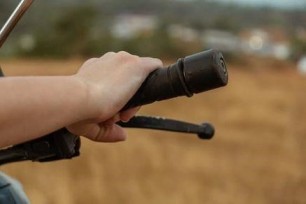
Know about these ten tips to deal with hand numbness while riding
Hand numbness affects all bikers, from beginners to professionals. A few hours into riding a bike, you may begin to feel tingling in your palms and fingers. The stinging sensation is caused by compressed nerves in the shoulder, elbow, or wrist and might last several hours.
You shake it off in the hopes of alleviating the dull ache, but it doesn't seem to work. So, what is the solution? Even if these techniques do not eliminate the condition, they can at least assist in easing or lessening the numbness while riding.
1. Wear protective gloves:
Vibration stresses the nerves and forces you to hold more tightly than usual. Wearing padded gloves might assist but make sure they're not too tight since this can complicate the issue.
2. Alter your arm position:
Keep changing your grip on the handlebar throughout the journey to prevent exerting the same persistent strain on your wrists.
3. Loosen up the elbows:
Relaxing your elbows engages your torso muscles, relieving strain from your hands. Let your elbows rest in all situations to allow you to soak vibrations from the road.
4. Maintain body balance:
Don't forget about your core. Maintaining your body's balance while riding may dramatically reduce the amount of pressure on your hands.
5. Tune-up your bike:
Ensure that the bike's suspension is correctly tuned and the tyre pressure is perfect before every ride. Decreasing the vibration is crucial to experience a smooth ride.
6. Get your bike altered to fit:
Bike fitting suggests moving the seat rearward, lowering it, adjusting the tilt, and elevating the bar. This will distribute your weight back and away from your hands.
7. Have a hold:
Consider adopting thicker, softer, and sticky grips so you don't have to grasp the handlebars as tightly. Another alternative is to use ergonomic grips. They're designed to assist you in positioning your hands correctly and relieving pressure spots.
8. Utilize your core:
Take note of your general position and the amount of involvement of your back and core muscles when riding. By focusing your conscious attention on your body's mechanics, you'll be able to make real-time modifications to ease the pressure on your arms and hands.
9. Physiotherapy:
If the numbness in your hands worsens or persists, you should seek medical advice from a physical therapist. They will determine the treatment by assessing the problem's root cause.
10. Stretching:
A few minutes of full body stretching before each trip will also reduce your muscles' numbness and strain. Basic stretching and strengthening exercises for your hands, wrists, and forearms will help prevent hand numbness.
It's common to exert strain on your arms and shoulders while biking. This usually happens unintentionally when you are in an unwanted environment, such as a traffic jam. Even if we take it easy and try to let go of the pressure, our hands and shoulders still tense up. As a result, discomfort and continuing difficulties in the muscles of the upper back result from this circumstance.
It's not just you who faces problems due to excessive riding, your bike also suffers through wear and tear and may eventually get damaged. Be prepared for this by looking up appropriate 2 wheeler insurance online that offers you the best-suited benefits for your needs and ensures the safety of your possession.
To get 2 wheeler insurance online, click HERE .
Disclaimer: The information provided above is for illustrative purposes only. To get more details, please refer to policy wordings and prospectus before purchasing a policy.

Here are a few anti-theft devices and how they can impact your motor insurance
Automobile theft instances have increased drastically throughout the country. In older times, thieves used to steal a less guarded motor vehicle using standard keys. To counteract this, automobile manufacturers designed the keyless remote system, prompting thieves to become more tech-savvy. As a result, thieves began stealing automobiles by employing black market gadgets that could delete data and even replicate the signalling of the keyless remote.
As a result of all this, owners have started installing anti-theft devices in their motor vehicles. These gadgets serve as an alert system and help save money on auto insurance rates.
How exactly do these devices affect the insurance premium?
Your insurer is responsible for compensation if your automobile is stolen. Automobile insurance providers recommend anti-theft systems to prevent criminals from taking your vehicle and, as a result, avoid paying the expense of your loss. If your car has a lower chance of getting stolen, the insurer will also benefit from it. Thus, every motor insurance company in India will provide discounts on the amount you pay to insure your vehicle.
Now, let us talk about some anti-theft devices that you might want to check for your motor vehicle too.
1. Alarms:
When the alarm system detects an unwelcome touch, it makes a loud noise. A burglar is likely to ignore your automobile if you have an alarm system because it attracts attention.
2. G.P.S. trackers:
You can track your automobile while it's moving when the G.P.S. technology is installed. Some versions even allow you to get warnings by push notifications and text messages on your phone.
3. Remote Disabling System:
These are some of the latest developments in anti-theft technologies. These gadgets link to your smartphone and allow you to brake, downshift, or decelerate. A con about these devices is that they are a bit expensive and hence seen less in passenger vehicles.
4. Kill Switches:
It's a switch attached to one of the automobile's critical starting components to inhibit the electric flow to that component when it is turned on. When the switch is toggled off, the connection to the component is restored, allowing the automobile to start normally.
You must conceal the switch in an unnoticeable location so that no one who accesses your vehicle knows its location.
5. Mechanical Immobilizers:
These are the most affordable anti-theft solutions in the market. These include steering locks, tire locks, bonnet locks, gear locks. While they prevent a vehicle from moving, there is a possibility that thieves can carry your vehicle away by towing it and later remove the immobilizers forcefully. Therefore, it's better to pair these devices with additional anti-theft devices.
A vehicle is like a partner, and buying one comes with specific responsibilities. Besides maintaining and servicing your automobile, you also need to prioritize its security. Always install anti-theft devices and give your vehicle the benefits of a double layer of protection with full motor insurance. Remember, your insurer evaluates the safety standards maintained by your vehicle. Therefore, installing security gadgets in the car can reduce the premiums offered by your motor insurance company in India.
Click HERE to learn more about our motor insurance plans.
Disclaimer: The information provided above is for illustrative purposes only. To get more details, please refer to policy wordings and prospectus before purchasing a policy.

Following are a few best places to go off-roading in India
Travel adventure always has its benefits for your quality of life and overall well-being. Getting your family and friends into one car and driving to different locations to explore the culture, people, wildlife, food, heritage sites, etc., is a thrilling experience.
But let's talk about off-roading? It's an activity pursued on unconventional terrains that don't have a proper paved way. It's carried out on rugged tracks like deserts, mountains, dirt tracks, river beds, etc. There are variations of off-roading, including rock racing, cross country trails, dune bashing, etc.
Sounds intriguing? Certainly, but since off-roading needs unique locations and uneven terrains, you might wonder which places offer these experiences. This blog will discuss some of India's best places to go off-roading.
1. Gir forest national park, Gujarat:
Route 2-6 through the Gir forest national park offers an off-roading experience (35 kilometres) where you can enjoy the beauty of wildlife and see asiatic lions, spotted deer, nilgai, sambar, and numerous other flora and fauna that will make your journey mesmerising.
2. Rann of Kutch, Gujarat:
Divided into two parts called the Great Rann and the Little Rann, Rann of Kutch is one of the greatest wonders of India. It has dry and dusty terrains but hides a few marshy surprises beneath the sand. The clay mud retained makes driving through these areas challenging but exciting at the same time!
3. Zoji La Pass, J&K:
Zoji La pass is a challenging and tricky trail in Jammu and Kashmir. It is located at a great height, and specific points in the course do not allow more than one vehicle to pass. You can enjoy the view of the snow-covered mountains and the beautiful sceneries the state has to offer. This place is worth all the efforts and challenges.
4. Kanha national park, Madhya Pradesh:
Situated in the districts of Mandla and Balaghat in Madhya Pradesh, Kanha national park is a tiger reserve. The national park's safari is listed amongst India's most popular off-roading trails. It occupies an area of 940 sq kms.
5. Bisle ghat, Karnataka:
This beautiful trail in Karnataka takes you along a route consisting of almost fifteen waterfalls. The trail is narrow and challenging, but the scenic views of the panoramic ghats make it worth trying.
While off-roading may seem enticing, especially for people who love adventure, it can be risky too. You need to understand all the dangers and be a skilled driver to go off-roading in rugged terrains. Ensure that you have enough food, water and first aid kits in case of an emergency. Never underestimate the safety aspects of off-roading.
You will also need some equipment for ease and precautions. These include GPS+maps, spare tyres, shovel, rope, and ensure that you have a tank full of fuel.
From our discussion above, you can gather that it is a challenging activity and requires your vehicle to function efficiently. The dangers associated with it indicate that there are possibilities of damage to the car. These extreme roads will test your car's performance to its core. To ensure that your vehicle is protected against any severe damages, you need to get it insured. And keep up with the car insurance renewal dates to enjoy your trip wholeheartedly without any stress.
Click HERE to know more about car insurance renewal.
Disclaimer: The information provided above is for illustrative purposes only. To get more details, please refer to policy wordings and prospectus before purchasing a policy.

Some health tips to prevent chronic kidney disease
Being healthy is one of the essential human development goals that has now turned into a necessity of the hour. Kidneys plan an essential role in enhancing the functions of our body, and like all organs, they have a due place in our system. Health risks can come untimely, and it is advisable to subscribe to any of the available, Affordable Health Insurance plans to enjoy protection against the financial cost of treatment. But it is equally important to follow specific tips through which you can fight even the toughest of kidney problems: -
- Eat right It is an essential component in maintaining your health, and there is no way you can hope to make some progress with a healthy lifestyle if you don’t eat right. Fresh fruits, whole grains, frozen vegetables, and low fat/fat-free dairy products are some of the essential food components that must be focused upon. It is vital to cut back on salt and added sugar along with a particular focus on maintaining less 2300 milligrams of sodium every day.
- Physical activity and aiming for the right weight An active schedule of about 30 minutes on most days can aid in keeping the calories and cholesterol under control. You can always consult a health care provider about the right kind of exercise that suits your physique. Use the NIH body weight planner to tailor your calories and the physical activities that will help you in maintaining the right weight. Being obese exposes you to various health risks, using a dietician can be extremely helpful.
- Indulge in stress-reducing activities To manage stress and cope with your problems, just the right way to improve emotional and physical health. Meditation or yoga are some of the most popular styles in which you can gain physical and mental health benefits. Stress can also be significantly reduced if you are sleeping on time. A human body needs about 7-8 hours of proper sleep to maintain all the inappropriate systems conditions.
- Avoid alcohol intake It tends to increase blood pressure, thereby adding to calories, which can lead to weight gain. Other health issues add to additional risks, thus making the need to search for affordable health insurance plans. Keep a tab on the consumption of alcohol and make sure that it does not exceed one drink a day. It is also advisable to avoid counter pain medications, especially the regular usage of anti-inflammatory drugs such as ibuprofen and naproxen, since they have the potential to damage kidneys.
- Keep a regular tab on your blood sugar Your glucose numbers every day and make sure they are near the goal you are aiming for. Maintaining your blood sugar level is one of the most efficient ways to be alert for any diabetic issues. Maintain a regular tab over your blood pressure number and take all the medication that has been prescribed by your health care provider.
These are some of the most effective ways through which you can keep all the kidney problems at bay. However, you must focus on browsing through affordable health insurance plans to get an idea about the best offers available online from leading insurance companies.

Why health insurance claims get rejected
One of the best ways to safeguarding your finances while availing medical treatments is getting health insurance. Good health insurance protects you and your family against the various health risks that life toss at us over time — it lets us have that peace of mind.
However, not all the claims that are raised are settled. There are various reasons for a claim application getting rejected. A claim rejection could lead to much unwanted financial stress. By making sure of certain things, you can put away the anxiety of your claim rejection.
Here will look at the reasons why health insurance policies get rejected.
Claim process
Health insurance is a contract between the insurance provider and you. To make sure that all the terms in the agreement are retained while filing a claim, you need to input correct details in the application. If you decide to hide any bit of information about your health in your insurance documents, then you may get into some trouble while filing a claim. Misinformation can lead to your claim being rejected.
Health conditions
Some health insurance companies do not provide cover for specific illnesses. So if you happen to fall ill with these diseases, then your insurance might come of no use. It is advisable to get an insurance which has support for critical illnesses, as it will save you much hassle later on. To begin with, you should get a thorough health checkup (most of the insurance companies provide this option). This will help you know what the potential illnesses that you might face in the future are.
Policy period
Health insurance policies expire after a certain period, depending on the terms that you have agreed with. Expired health insurance is no good. If you make a claim after your health insurance has expired, then your claim is bound to be rejected. Make sure that you keep on paying your insurance premiums before your policy expires, or get insurance which lasts you throughout your life.
Exclusion policies
There are certain conditions — depending on the insurance provider — under which you are not liable to file a claim. These conditions are also called insurance exclusions. So if you happen to raise an insurance claim against these exclusions, then your policy might get rejected. To deal with this situation, it is best to read the policy terms and conditions carefully. You can even consult your insurance provider if you do not understand a particular clause.
If you are looking for a good health insurance policy for family or yourself, then Magma HDI health insurance can, indeed, be an ideal option. It provides you cashless hospitalization of an extensive network of hospitals across India and offers you features such as optional cover for critical illnesses so that the health of you and your family is secured at minimal costs.
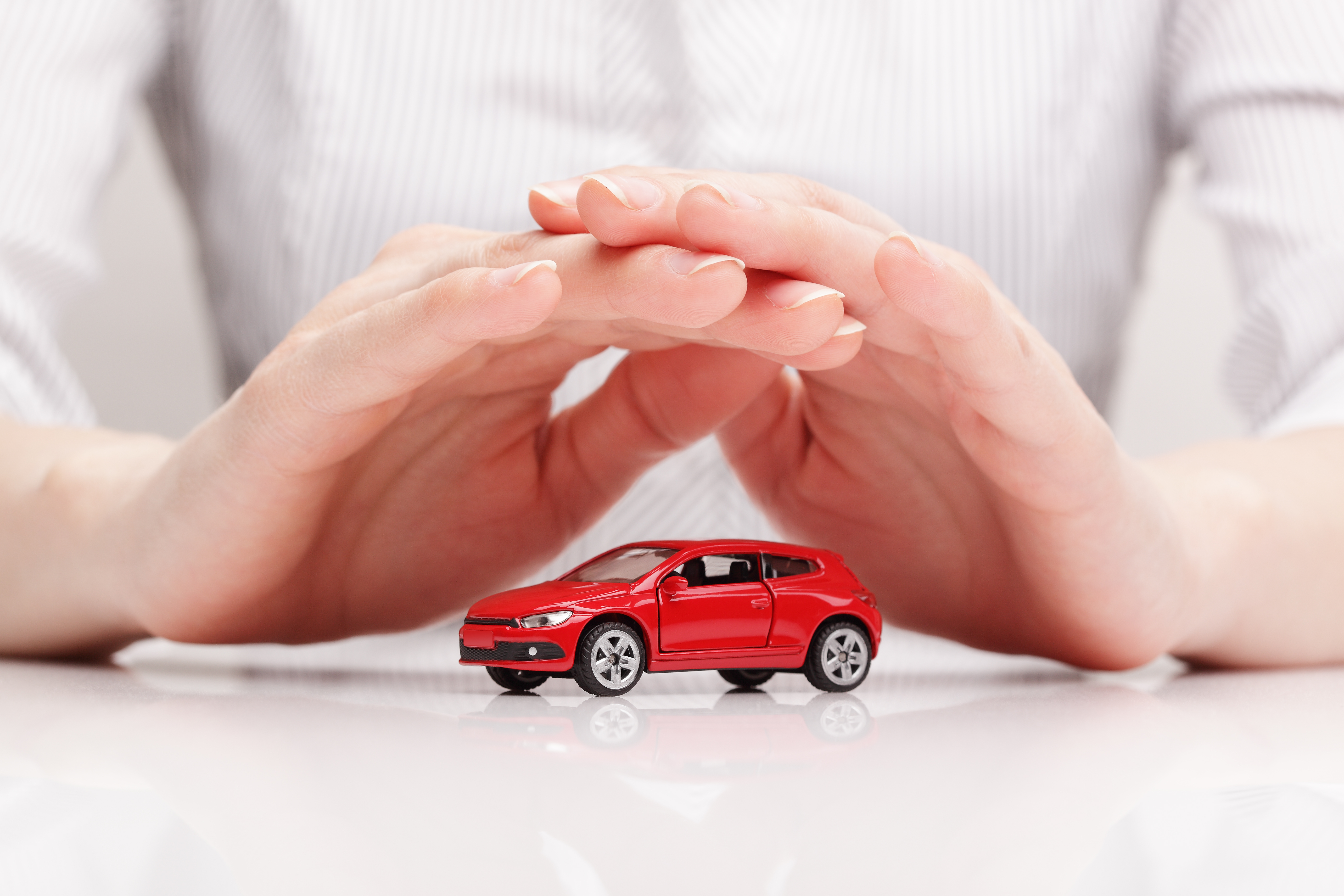
Things to keep in mind when you shift your car insurance
Most car insurance plans are usually aimed at providing the services for one year, post which they are renewed. However, not being satisfied with the kind of services you have been receiving from your insurance company can be extremely disheartening. In this situation, you can decide to compare and buy a car insurance policy online. While switching car insurance may seem like an easy task at the outset, there is a lot of research that goes into deciding since you aspire to receive the best services. Here are some of the most critical factors that must be kept in mind before shifting your car insurance: -
- Premium and car cover There is no guarantee if you will receive a change in the car premium, and this is entirely dependent on your insurance company. However, like all things, even this may vary according to the risk covered by the premium, which is again determined on the base of zonal risks. It is only natural for the insurance company to ask for a higher premium if you are aiming to locate yourself at a catastrophic prone zone like floods or earthquakes.
- Importance of no claim bonusThis is one of the most important factors of every general policy. Shifting your car insurance may lead you to wonder about the NCB points earned during the previous investment. You can finally heave a sigh of relief since NCB is offered to the insurer for every year that goes unclaimed and is definite to follow you, despite your location. Be it changing the vehicle or switching to a new insurance provider; you can always hope to find your earned NCB everywhere with you.
- Importance of upgrading cover A new place means a shift in requirements and needs. It is always advisable to analyze your vehicle before availing any insurance service since you will then be equipped to make the right decisions. While aiming to Buy Car Insurance Policy Online , be sure to get a comprehensive insurance policy with third-party coverage. This will aid in protecting your car from any potential damage that may occur to being involved in an accident, theft, vandalism, natural disasters, among other things.
- Evaluate your reasons It is important to understand why you are tasking a drastic step of changing your car insurance. While the reasons may be many, increased car insurance premium brings with it additional financial responsibilities. You need to be sure about the decision you are taking and should be able to afford the premium.
- Inform your current insurer When you inform your current service provider, they are sure to provide you with ample reason to stay. They may even meet you to resolve your grievances. If you feel your problems have been resolved, stick the decision to stick to your current service provider or changing it depends entirely on your convenience. Also, an additional tip is to not just focus on low premiums, since there are other features like, list of network garages and customer service efficiency that must be kept in mind while availing any insurance company’s offer.
You can always check details about a car insurance policy online and carefully analyze every feature that comes with different companies to make the right decision.

Six best safety tips useful for born again bike riders
The returning riders, also known as the born-again riders, are folks who previously rode motorcycles and want to get back into it. No matter how professional you were in the past, continuing something after a break has some adverse outcomes. Therefore, if you have given up riding for any reason and wish to reclaim it with your two-wheeled companion, there are a few risks you need to keep in mind.
This article will thoroughly guide you with the best tips to avoid mishaps for returning riders. We suggest investing in bike insurance for your two-wheeler before you restart your lost desire to ride a bike again. In case you already have one make sure it is up-to-date.
1. Begin slowly and safely:
Returning riders should take it easy at first and gradually gain confidence while riding. Start your first few trips with short distances and ideally in minimal traffic conditions. Do not push your limits and end the journey whenever necessary.
2. Know which bike to start with:
If you have not hit the road for a long time, consider going for a moderate bike at the beginning. Compared to the bikes you rode in your days, the current models can be overwhelming for you. For example, if you decide for high horsepower and remain unsuccessful in handling it, your motivation will hit the ground. It will leave you disappointed and undermine your confidence. Hence, go for a manageable bike at first, and once you've acquired confidence and improved your road sense, you may always upgrade.
3. Consider taking a refresher course:
Although this sounds a bit unnecessary, basic training at a motor learning school helps you regain control of the two-wheeler and understand the updated traffic. Even if you can't seem to find a physical course, the internet will never let you down. Numerous articles, podcasts, videos, vlogs, and blogs regarding this subject will guide you in the right direction.
4. Learn and adapt to what has changed:
Regardless of the gap in your riding, the technology and regulations would be different when you start over. The machines used in today's bikes are advanced, tyres have anti-skid grips, and the braking systems have improved. Try to acquire the knowledge of up-gradation as much as possible to avoid facing issues about adaptation to new things.
5. Don't skip the riding gears:
Never neglect your safety gear. If your gears from earlier do not fit you anymore, get new ones right away. There is no acceptable reason to skip wearing your riding gear for any occasion.
6. Learn how to unlearn:
The future is for those who can learn to unlearn numerous times throughout their lifetimes. This should be a motto for born-again riders. Forget all the myths and misleading facts from the old days and make space for new logic and learning. Technology progresses every day, and so does the experience based on it. Gain knowledge of it prior and incorporate it into your riding style as often as possible.
We hope to assist you in making your transition easier than possible. The above-compiled tips will surely do the job. Also, having bike insurance will boost your confidence and ensure a happy return to biking. So, if you’ve made up your mind, then you’re set to dominate the roads again!
To get the best bike insurance, click HERE .
Disclaimer: The information provided above is for illustrative purposes only. To get more details, please refer to policy wordings and prospectus before purchasing a policy.
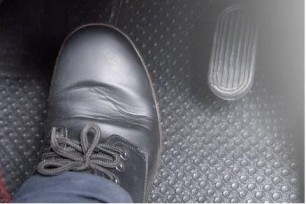
What to do when the brakes fail suddenly while driving
How well are you prepared for a situation like a brake failure? Well, most people can't imagine the correct answer. Imagine you are driving comfortably, and your eyes are engaged on the road. Then, when you approach traffic or a speed breaker, you hit the brake pedal, but your car doesn't slow down. You repress harder this time, but you are still speeding. Are brake failures terrifying to even think about? It's best to prepare for such panic scenarios.
Brake failures usually are not recognized beforehand; they hit you when you are in motion. It can be a panicking situation leaving the driver clueless and inviting a potential threat to his life.
In today's post, we'll talk about the dos and don'ts to stop your car safely when the brakes fail.
What to do?
1. Don't lose your cool:
We understand it's easier said than done but try not to panic. This will only put you and the passengers in unnecessary danger at the time of an actual stressful situation.
2. Go easy on the throttle:
Immediately take your foot off the accelerator pedal. You don't want to speed up even by mistake as it can only worsen the situation and make the vehicle handling uncontrollable.
3. Pump the brakes:
Press the brake pedal multiple times to generate enough pressure in the hydraulic system of the brakes. This can miraculously work out, and you'll be able to halt your car even after brake failures.
4. Lower the gears:
If the pumping doesn't help, shift into a lower gear gradually. Doing this increases the mechanical resistance, referred to as engine braking.
5. Engage handbrakes:
Some cars can restrict you from shifting to extra-low gear until the car has slowed sufficiently. In such cases, handbraking comes in. When you engage the handbrakes, do so gradually. If you suddenly apply them, your car can go skidding to make the situation worse.
6. Turn on the AC to the maximum:
Turning the AC to the max will take a few kilowatts of power. Turning on all extras will cause resistance to the alternator that can help you slow down.
Other dos:
● Keep your vision on the road at all times.
● Turn on the hazard lights. This will notify other drivers that you're in an emergency.
● If you notice an uphill road, use it to your advantage. Taking your vehicle to it will help you curb the speed.
● Wear your seatbelt at all times.
● Follow the speed limits on all roads.
Now that you know what to do. Let’s discuss the don'ts real quick:
● Do not continue driving on cruise control.
● Do not cut the ignition or change the gear to neutral as you will lose the full control.
● Do not shift from higher gear to low gear drastically. The same goes for handbrake. Do not engage it at once. This can cause skidding.
● DO NOT shift to reverse gear. This will completely shatter the gearbox, and further will not allow you to downshift.
● Don't move sideways with a speeding vehicle. Yes, it increases friction, but you run the danger of spinning out.
● Do not run into a concrete wall or a block to crash stop; go for shrubs and bushes.
When such situations arise, you are in danger and the rest of the commuters around. Therefore, you must think rationally and make decisions. You and your car can sustain damage in such scenarios; having reliable car insurance at your disposal will help you recover from it. If you have one, check for your car insurance renewal before you hit the roads. Car insurance renewal is a ticket for extended protection of your prized possession.
Also, don't ever overlook the necessity of having your car serviced at regular intervals so that critical safety systems, such as braking, are well maintained.
Car insurance renewals are possible online now. Click HERE to do it right now.
Disclaimer: The information provided above is for illustrative purposes only. To get more details, please refer to policy wordings and prospectus before purchasing a policy.

Complete guide for learning horse riding as an adventure
Horseback riding is one of the most ancient adventure activities introduced in ancient times. And, it quickly became an integral part of every army, and until today it is a royal legacy. Adventure enthusiasts practice horse riding as a sport.
But horse riding is not as easy as it appears to be. Trusting a 1200 pounds animal to keep you safe and to cooperate with you is a daunting task. One wrong move can leave you paralyzed for the rest of your life; some mistakes can be life-threatening. But, if you are willing to take the risk to be a part of the equestrian community, you will undoubtedly have a great time learning it!
Following your passion or pursuing horseback riding as a hobby is a great start indeed! And to help you with it, we have created an essential checklist to learn horse riding as an adventure.
1. The attire:
Appropriate dressing plays a significant role in ensuring personal safety, especially when indulging in a gruelling sport like horseback riding. You require ankle-length, close-toed leather boots with a small heel to keep your feet from slipping out of the stirrups. Wear long pants to keep your legs safe from colliding against the saddle. Protecting your head is the most crucial safety aspect, so a helmet should be an essential accessory of your fit. Remember, even the horses require proper equipment. A properly fitted saddle, well-tightened cinch, a comfortable bit and bridle, and suitable hoof protection can make the sport for your horse safe and enjoyable.
2. Learn to use the reins:
Just as important it is to handle the steering of a car when learning to drive, similarly before hopping on the horse, you should understand the appropriate use of the reins. Do not hold the reins too harshly as it can hurt the horse, be gentle with it. Keep your arms at the correct angle from your elbow. The moment you master the handling of reins, you get the command over your horse.
3. Spend time with the horses:
One of the ways to be more comfortable with the horses is to spend more time with them. Try finding a part-time job at the stable or maybe just volunteer! This is how you will learn things you would not be able to learn otherwise, and horse riding will be easier for you.
Also, never forget to greet your horse first before training. It is essential to show compassion and affection to your fellow animal. Horses value the love and care their masters bestow upon them, which massively impacts the riding experience.
4. Correct your posture:
While on the back of the horse, relax and sit up straight. This will help you maintain balance and get a firmer and better hold on the horse. Relax your shoulders, and place both of your feet in the stirrup.
5. Stay hydrated:
This may seem like a small detail, but on warm and sunny days, horse riding can make you sweat profusely, therefore carry a water bottle along with you and stay hydrated.
We hope these valuable tips will guide you to kick-start your passion for learning horse riding. However, as the Equestrian community says, “Horses don’t care how much you know until they know how much you care.” Just mastering the skills is not sufficient; you need to build a mutual understanding with your horse. Trust and respect are two vital factors that should define your bond with your saddled friend.
The more time you spend training, the better your skills will get, but the chances of you getting injured increase simultaneously. Therefore, before saddling up and preparing for this extreme sport, have a personal accident insurance policy and make your experience safe and unforgettable. Don’t let the fear of falling hinder your desire to learn!
Click HERE to get the best personal accident insurance policy quotes.
Disclaimer: The information provided above is for illustrative purposes only. To get more details, please refer to policy wordings and prospectus before purchasing a policy.
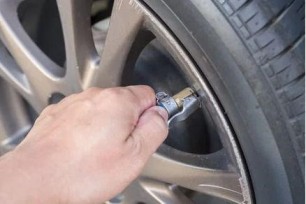
Nitrogen or Air – What suits your car the most?
Tyre management has become a critical factor in maintaining the overall condition of cars. In contrast, we cannot control the factors such as weather and road conditions that affect the wheels. But we do have control over what goes inside them. And mind it, the type of air you choose to put in your tyres can have a significant impact. So, if you are in a dilemma about which air to put in your tyres, you are not alone. The most common argument in the debate ranges from nitrogen being the most prominent option.
Not sure! This blog guides you in choosing a side. We have put both the options under the test of several key factors and see how each one fits in. By the end of this blog, you will be able to decide which one is the right choice for you.
1. In terms of cost:
At most fuel stations you get free air refills and check-ups. In the case of nitrogen, it’s not free and will cost you around 40-50 rupees for a four-wheeler. Even if you don't get a free refill of air, it usually costs about 10-15 rupees making it cheaper than nitrogen.
2. In terms of availability and convenience:
Normal air is readily available. The infrastructure and storage systems required for nitrogen are not present in every region, thus bringing limitations in its availability in those areas.
*Pro-tip: If you have nitrogen-filled tyres and get a puncture on the road where there are no nitrogen filling stations. Inflate the tyre with air. Don't worry; it is entirely safe.
3. In terms of tyre pressure:
When inflating a tyre with nitrogen, 95% of pure nitrogen goes into it. Nitrogen offers more consistent tyre pressure because nitrogen molecules hardly ever pass through the small holes in the tyre's rubber, being heavier and bigger in size. A tyre filled with conventional air has approximately 20% less pressure.
4. In terms of fuel economy:
Consistent tyre pressure results in improved fuel economy. As we already know, the winner in terms of tyre pressure. It's clear that nitrogen is the frontrunner in terms of fuel economy.
5. In terms of weather conditions:
Water vapour in conventional air causes the tyre pressure to vary when the weather conditions change. When the temperature outside is hot, the air within the tyres expands, resulting in over-inflation. On the other hand, they get underinflated when the temperature drops.
Not only that, but water vapour in your tyre causes corrosion in the metal rim of the tyre. As nitrogen contains no water vapour, tyre pressure variations and deterioration are non-existent.
From all the above information, it is clear that nitrogen does hold superiority over conventional air. Conventional air is not a bad option either. Yes, if your car stays idle for a more extended period, using nitrogen will save you trips to the air refill station every time you take your car out.
Maintaining proper tyre pressure is a must whether you use nitrogen or air. Just like that, maintaining your car insurance is a must if you want to drive legally on the Indian roads. So before you even take out your car for a tyre refill, make sure you buy new car insurance and if you already have one, keep it up to date.
To buy new car insurance today, click HERE .
Disclaimer: The information provided above is for illustrative purposes only. To get more details, please refer to policy wordings and prospectus before purchasing a policy.
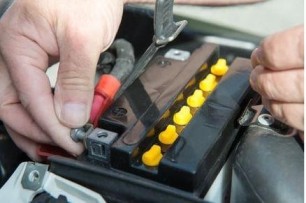
Efficient ways to extend and maintain the battery life of your two-wheeler
People have a habit of covering more miles on two-wheelers than cars for convenience and cost saving. One thing that every biker wants to know is how to extend the two-wheeler battery life. Long battery life indicates that your two-wheeler will function for an extended period compared to other vehicles.
But the battery gets examined only at the time of each servicing or repair. Nonetheless, it needs more attention than these few times. You do not have to be an expert in mechanics to look after a battery, nor do you have to make endless trips to your nearby garage or service centre. Just a few regular checks and maintenance will improve the quality of the battery in terms of enhancing life.
Let’s have a look at the ways you can extend the battery life of your two-wheeler.
1. Charge the battery regularly:
Allowing your two-wheeler battery to discharge before charging to maximum capacity is not a good idea since it will decrease its life and negatively influence its performance. Hence, regular charging of the battery is a must. You can check charge levels using a multimeter. Allow the two-wheeler motor to be idle for about 15 minutes to get adequate charge levels.
2. Top up the fluids in the battery regularly:
The electrolyte in a battery gets utilized whenever you charge and discharge it. Hence, keep it refilled with distilled deionized water. If you find dropping electrolyte levels during your check, make sure to refill it up to avoid replacing the existing battery. If you don’t top up the electrolyte after a few cycles, your battery will begin to break down. A traditional two-wheeler battery would have many openings to inspect and fill electrolyte unless it is sealed.
3. When not in use, disconnect the battery:
Plugged-in batteries lose power, and hence not practising that might help you get the most out of your batteries. If you are not planning to use your bike for an incredibly long time, it is recommended that you disconnect the batteries to avoid power loss. And when you do, make sure to keep the batteries in a warm, dry location.
4. Look for any unsecured connections:
It’s crucial to scrutinize the batteries regularly to ensure there are no loose connections. Check for connectivity issues, scratches, and short-circuits of wires regularly to avoid long-term consequences. Internal wiring connects all sections of your two-wheeler to the battery, and weak connections might cause your two-wheeler to struggle to start. Some wiring errors might result in serious problems that affect other essential parts and the functioning of a two-wheeler.
5. Don’t put too much strain on the battery:
High-capacity lighting and LEDs that you connect to your two-wheeler put a lot of loads on the battery. As a result, it may cause the battery to drain and eventually lead to its termination. Ensure that the accessories you install don’t exceed the battery’s capacity.
On a conclusive note, for the smooth performance and uninterrupted functioning of your two-wheeler, keeping the batteries up-to-date is a crucial thing. Your two-wheeler derives its power from the battery, and any fault to it can bring the vehicle to a halt. Prepare for such uncertainties much in advance by investing in the zero depreciation feature of the regular 2 wheeler insurance. Taking good care and being careful is not just sufficient. Buying suitable 2 wheeler insurance can add an extra layer of protection.
To get two-wheeler insurance, click HERE .
Disclaimer: The information provided above is for illustrative purposes only. To get more details, please refer to policy wordings and prospectus before purchasing a policy.
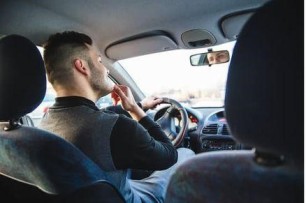
Reasons why underage driving is posing a threat to the lives of other commuters
Learning to drive is a thrilling moment for teenagers. Transitioning from remote-control cars to handling the steering physically boosts the adrenaline for every youth. But this situation can be daunting for the parents. Statistics suggest that parents have valid reasons to be concerned because underage drivers are more likely to be involved in a car accident than any other age group.
Teenagers have better vision, faster reaction timing, and an acute sense of hearing than adults. Then why are accidents more common in this specific age group? In this article, we share the top reasons for accidents involving teen drivers;
1. They think differently, to begin with:
Teenagers are still maturing, and their brains are highly active. Studies have shown that the part of their brain that supervises planning and controlling impulses is still developing. Hence they’re more prone than adults to indulge in dangerous activities and struggle to evaluate the consequences of their actions while driving.
2. Lacking experience:
Teenage drivers are unprepared to make the judgments that drivers must make to be safe. They are still learning the road laws, traffic discipline, and the fundamental operations of a car. Furthermore, being impulsive, as mentioned above, combined with inexperience, lead to disastrous results.
3. Distractions are everywhere:
From smartphones, talkative co-passengers (mostly peers), or the latest track by their favourite artist blasting on the music system, the list goes on for the things that distract the young drivers while driving.
Teenage drivers may be cautious and stay focused to avoid distractions in their early stages of driving. However, the more comfortable they get behind the wheel, the more likely they are to participate in activities like texting on the go, scrolling through their social feed, or searching for a song.
4. Driving under the influence of intoxication:
As they’re underage, they are not legally allowed to drink. If you think from a teenager’s perspective, the safest place to chug some beer is in the car. Driving under the influence of a substance is a significant threat to other commuters as the mistake can adversely affect the lives of many.
5. Seatbelts? Not a need:
According to statistics, youngsters take wearing seatbelts casually. This casual approach leads to injuries and increases the chances of life-threatening situations in case of an accident.
If you're a parent and reading this article, imagining such situations can make you worry. Your best bet is to create a healthy environment with your children by laying out driving rules and ensuring they follow them. Your kids often take you as an example when they drive; make sure you set a good example for them by driving responsibly. Tell them about the possible consequences of their actions and the trouble they can get into. Also, make it clear that they cannot drive without holding a valid driving license.
Many things can be taught to your young one to get started, like wearing a seat belt, avoiding speeding, especially during the darker hours of the day. To give your car additional protection, make sure you invest in good private car insurance. This will help you adhere to the mandatory laws of our country and cover your loved one in case of an accident.
Click HERE to buy new private car insurance today.
Disclaimer: The information provided above is for illustrative purposes only. To get more details, please refer to policy wordings and prospectus before purchasing a policy.
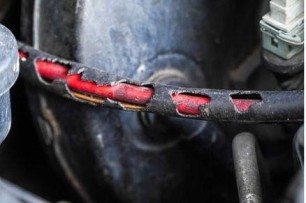
Best tips to protect your car from rodents
At some point in time, you've consciously or subconsciously imagined worst-case situations for your car, including accidents, terrible weather encounters, or theft. Ever wondered about infestation attacks on your car?
Underneath your engine, it's dark and warm - a healthy and ideal environment that suits these little creatures. The chance of your car getting infested by rodents drastically rises during these colder months as your car acts as a shield for them against predators and insulates them from the cold.
Rodents often cause significant damage to your vehicle by eating wires, defecating, creating nests, and accumulating food inside your engine. To save you from the trips to pest controls and spending your hard-earned money on repairing the damaged parts, we've put out some pointers that will help you in keeping the rodents off of your vehicle.
1. Keep your car moving:
Rodents like to make their base into cars that don't often move. Taking your car out once in a while can help. A moving vehicle won't give them the time to get comfortable, and they are less likely to make the car their camp.
2. Clean your car thoroughly:
Rodents will build their nests in places where they can readily collect food. To begin, make sure your car is free of any dropped food. Vacuum through your vehicle and collect each bit of fallen food, no matter whether it's the snack you ate while stuck in traffic or it's your dog's food. Get rid of the leftovers and trash thoroughly.
If, unfortunately, your car was already home to rodents, the scent of them remains. This creates a possibility that the same creature or someone is attracted to the smell and returns. Be sure to get rid of all the droppings, nesting material, and chewed-up debris.
3. Have an anti-rodent parking space:
Keeping food and water off your garage is equally essential. Rats like to relax and feed in locations that are dark, quiet, and appear to be safe. They dislike being in open spaces. You don't want to have any hiding spots that aren't required. You should keep grain sacks, food containers, and everything else of a similar kind away from your car and the parking spaces.
4. Keep the hood of your car open:
When your car stays parked for an extended amount of time, leave the bonnet open. Additionally, leave a light on above the bonnet during the night time. As we mentioned earlier, rodents love dark places. Keeping the engine area bright makes them less likely to settle in.
*Pro-tip: Focus some lights on your tyres and place traps beside them; this will help keep rodents at bay. Rodents generally enter the vehicle engine climbing through the tyres.
5. Insure your car against animal attacks:
Car insurance helps safeguard the car and the driver and protects against the damages caused by animals, including rodents. The stress on your pockets caused due to the repairs of chewed wires can be immense. Control it by getting comprehensive car insurance today to add value to your car!
Rodent attacks are a common problem in India that frustrates car owners. They bring in unexpected damages and financial losses and, most importantly, leave the car inoperative at the time of need. Follow these tips mentioned above to stop the activities of these little trouble makers early on. If you've already faced an issue with them, take care that you don't repeat the same mistakes.
Click HERE to get the best car insurance in the market.
Disclaimer: The information provided above is for illustrative purposes only. To get more details, please refer to policy wordings and prospectus before purchasing a policy.
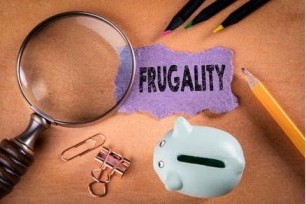
Eight advantages of a frugal lifestyle for improved living
Frugal living contemplates a lifestyle in which a person is cautious about spending money and utilizing available resources. Many people mistake frugal living for cheap living; first let us clear the air about it. Even though the ultimate aim of both the groups is to save money, being frugal and cheap are two distinct concepts that possess different approaches. Individuals who prefer going cheap are solely motivated by the price tag, while frugal individuals prioritize the value of service over its cost.
Do you love savings but don't want to be inferior to your life priorities? Here are the 08 benefits of a frugal lifestyle.
1. It helps you understand your priorities:
Frugality enhances your outlook toward the goods you buy. When you spend money for a month on only the genuinely essential things, you'll be astonished at how simple it is to identify your priorities.
2. More time for your passion:
Once you start living frugally, your financial status improves with each economic decision. Once this is achieved, you'll move further away from a cycle of pay-checks. This is how you start enjoying financial freedom.
3. You become more eco-friendly:
You do your bit for mother earth when you make frugal choices. It's straightforward. Your only essential shopping habits help reduce the carbon footprints. The most noticeable environmental benefit of less shopping is the less waste created by it.
4. Declutter your life:
We buy goods in our consumerism-driven society that we don't really need. When you attempt to be a frugalist, you only spend on what you actually need and ignore the rest. When you have less stuff to deal with, you'll feel less burdened and stressed. This way, a frugal lifestyle will improve your standard of living.
5. Gain your peace of mind:
When the going gets tough, frugal living allows you to handle it better. Losing your salary isn't as frightening if you live a low-cost lifestyle, have a rainy day fund at your disposal. It is simple to get out of debt and develop a financial cushion to fall back on when you live frugally.
6. Improves your happiness quotient:
With less stress and worries, you invite extra happiness in your life. Also, it's essential to understand that real happiness is not materialistic. Next time you get an urge to go on a shopping spree, try volunteering for a social cause and measure your level of satisfaction. You'll feel great.
7. Planning early retirement:
Your dream of taking early retirement can be a reality with a frugal lifestyle. As you'll have a financial cushion for you, it will be easier for you to say goodbye to your working days.
8. More money to add to your savings and expand investments:
It can amaze you to realize the amount of money you can save once you start making economic choices. Every time you make a frugal decision, the money you will save can be invested into your portfolio of socks, repay your loans, buy essential general insurance etc.
Your quest to live a simpler life gets a new definition with frugality. It is an effective strategy for sailing your financial ship and bringing much-needed peace of mind as well as a sense of security. Remember, you don't have to cut short on your essential needs, such as a healthy lifestyle, home, travel or general insurance. Instead, you are required to be mindful of your spending on every action. The key to the door of happiness is in your hands. Unlock it!
Click HERE to know more about general insurance.
Disclaimer: The information provided above is for illustrative purposes only. To get more details, please refer to policy wordings and prospectus before purchasing a policy.

Eleven ways a traveler can reduce his carbon footprint
Climate change is not a new threat to our planet, and we all are well aware of it. Large amounts of greenhouse gas emissions endanger wildlife and nature, and the bare minimum we can do is watch our actions, refine them, and reduce damage as much as possible. As per the studies, airlines alone are one of the biggest reasons of carbon emissions for the environment.
At the time of severe climate challenges, both the tourism industry and travellers are adopting green ways to minimise their carbon footprints. Most conscious travellers recommend embracing a travel culture that is environment-friendly and sustainable. As a traveller, you can always opt for a minimal carbon footprint and a sustainable form of travel.
We recommend following travel practices that help contribute towards zero carbon footprints:
1. Flying to nearby destinations should be shunned; instead, use public transportation like buses or trains. Take flight only if the distance is far, and make sure to book flights with no layovers.
2. One-time use of plastic products such as water bottles will increase the weight and the waste. Instead, carry mostly reusable items and do not pack heavy.
3. Choose efficient modes of transport to travel to your destination. Simply do walking, ride a bike, or take local public transportation when sightseeing.
4. Avoid looking for your traditional food abroad and try the local cuisine. The imported food items emit a tremendous amount of carbon footprint.
5. Purchase meaningful, valuable, and authentic local souvenirs only. Avoid mass-produced clothes, plastic trinkets and cheap articles made on an assembly line in third countries.
6. Rather than packing or purchasing new equipment for your adventures, look for options to rent it on location. Again, sharing is better than possessing for the environment.
7. Stay in an environment-friendly local hotel and contribute to the local economy. Avoid unnecessary use of modern amenities if you have greener options.
8. Plan the tour in a manner that does not include exploitation of the wildlife and the life of the residents - question yourself about the ethics and effectiveness of each trip you take.
9. Keep an eye out for the local resources. The holiday attitude should not be an excuse to overlook how your presence negatively affects the people and environment in the area.
10. Evidence shows that travel makes individuals more sympathetic and creative and stimulates them to engage more actively in intercultural contexts. Be considerate to your purchasing if you want to reduce your carbon footprint.
11. Support projects and organisations that promote sustainable tourism. You may also donate to non-profits that advocate for climate action and help the tourist sector transition to a carbon-free future.
Travel has the power to change a person’s perspective of everything literally, and one should never discontinue it. However, during your journey, you should ensure that it preserves destinations and that our future generations have the opportunity to travel too.
With the planet's future at stake, conscious travel is the key to contributing to a better local environment and communities. But Remember to be sensible enough to protect your travel as well from any mishap while you undertake these trip. Always ensure general insurance that covers your travel you are planning next. You can easily get general insurance online quotes and purchase one for yourself before starting that meaningful trip.
There is no planet B, and with little effort from each individual, we can reverse the clock on this. So, let us travel green!
Get quick general insurance online quotes HERE .
Disclaimer: The information provided above is for illustrative purposes only. To get more details, please refer to policy wordings and prospectus before purchasing a policy.

Five trending technologies that will avoid distractions while driving
According to a report centered around accidents in India, The Nation has lost 1.3 million lives in road collisions in the previous decade alone, with another 5.3 million badly injured. With one collision per minute and one fatality every four minutes, India has the most significant number of road accident deaths. Despite having just 1% share of the world's vehicles, India estimates more than 10% of worldwide road accident deaths. These figures are alarming and must be addressed with urgency.
While most accidents occur due to distractions while driving, the automobile industry is developing innovative technology to keep drivers on alert mode to reduce accidents that plague the country.
Today, we'll take you through the exciting technology proving to be the difference between life and death.
1. Driver Fatigue Detection system:
Fatigue while driving is frequently the cause of some catastrophic accidents. However, it is possible to notice the early indicators of drowsiness before a fatal scenario occurs. The driver fatigue detection system can monitor steering motions and alert drivers when it is time to take a break.
The technology works by tracking the driver's steering behaviour as soon as they start the trip using an algorithm. It then detects variations throughout long journeys, as well as the driver's level of tiredness. Typical symptoms of fading focus include periods when the driver is hardly steering, followed by modest yet rapid and sudden steering adjustments to maintain the automobile on course. If that level surpasses a specific threshold, an indicator appears on the digital panel to alert drivers that they need a break.
2. Voice controls and Hands-free connectivity:
Nowadays, automobile manufacturers provide Bluetooth connectivity that allows you to communicate and control smartphones and media devices without operating them physically. This way, the driver doesn't have to take their hands and eyes off the wheels. Various studies also prove that there is less possibility of mishaps when the driver's car has a hands-free electronic system installed in their vehicle.
3. Automatic Emergency Braking system:
The Autonomous Emergency Braking system (AEB) automatically slows or even brakes a vehicle when it senses an approaching collision with an object. The most basic AEB systems can identify automobiles, but more complex systems can detect pedestrians, making them extremely helpful in urban settings.
4. Local mobile phone jammers:
The system uses radio-frequency identification (RFID) technology to determine whether a vehicle is moving and the driver is trying to use the cell phone. The technology then activates a local mobile jammer, which disables just the driver's device while enabling passengers to continue calling and texting as usual.
5. Lane departure warning system:
A deadly situation might emerge if a car strays out of its lane. Lane Departure Warning, abbreviated as LDW, identifies the road up to 40m ahead of the vehicle using specially designed cameras. If the driver is on the verge of straying out of the lane by mistake, the system will alert them via audio or haptic vibrations.
These technologies are indeed helping to make the roads safe for all of us. The testing of more prototypes is in progress to be implemented soon. While it may be you or your driver taking control of the steering, mishaps still can happen even with all these technologies in place to assist you. As the saying goes, "Hope for the best and prepare for the worst", show your preparation by covering your car under ideal car insurance. It's not only a wise investment in car insurance but also mandatory by National vehicle law.
Click HERE to buy the best car insurance available in the market.
Disclaimer: The information provided above is for illustrative purposes only. To get more details, please refer to policy wordings and prospectus before purchasing a policy.

How is intermittent fasting trending in the fitness world
Intermittent fasting has been a part of several cultures for many years however, it is recently picking up steam globally. The most googled diet-related search in 2019, it has become a hot topic in the health and fitness circle.
People are practicing it for better health, weight loss, and improved lifestyle by looking at its magical results. Studies also show that it has puissant effects on the body and mind, surprisingly impacting the well-being of an individual. This article shares some of the few insights on how it is becoming a trend in the fitness world;
What is intermittent fasting?
Are you new to the concept of intermittent fasting? Let us quickly give you a brief idea about it: Intermittent fasting is a method of diet that tells you when to eat instead of what to eat. It suggests alternate cycles of fasting and consumption. Fasting has a variety of ways to be carried out, with variable numbers of fast days and calorie limitations.
You calculate your feeding time and design a diet plan that sculpts a balanced health routine.
Reasons why people are going crazy over this new trend:
1. You have the freedom to do it according to your comfort:
Intermittent fasting allows you to personalize your fasting windows to your preferences. Beginners mostly go for the hourly schedule against the daily schedule. The short approach of 16:8 works on an hourly basis, whereas the 5:2 method, works in days.
2. It isn't just a fad; scientific research backs it up:
Intermittent fasting is the ultimate answer for our health and lifestyle concerns, from weight loss to balancing fluctuating insulin levels. Scientific studies proves and explains how this starvation and intake method is necessary for our body to function best. It also serves as actual nourishment for contemplation as it improves brain function, thereby increasing your tolerance to stress, pain, and illness.
3. Evident changes in the health:
• Your cells begin to heal themselves. Autophagy is a mechanism in which cells consume and eliminate old and defective proteins accumulated inside them.
• Insulin levels observe a downfall.
• An increase in growth hormone production provides fat-burning and muscle-building advantages.
• Significant improvements are observed in the function of genes linked to lifespan and illness susceptibility.
4. Intermittent fasting has a devoted celebrity following:
Celebrities all around the world have majorly influenced the crowd to opt for intermittent fasting. No less than any influencer marketing strategy, this social trend is widespread among active users and encourages a huge population to shift to this paradigm.
People are aware of the significance of fasting. Because of its incredible health advantages, the world has just recently realized its worth. This latest intermittent fasting and health craze is a simple but a long-term strategy to shed pounds and enhance overall wellbeing.
Human growth hormone levels rise, and insulin levels fall as you starve. In addition, cells in your body alter gene expression and activate crucial cellular repair processes. These advantages have convinced people how healthy intermittent fasting is. Caring for your health thoughtfully will guide you not just to stay fit but considerably save your hospital bills and online health insurance premiums.
To get online health insurance right now, click HERE .
Disclaimer: The information provided above is for illustrative purposes only. To get more details, please refer to policy wordings and prospectus before purchasing a policy.


